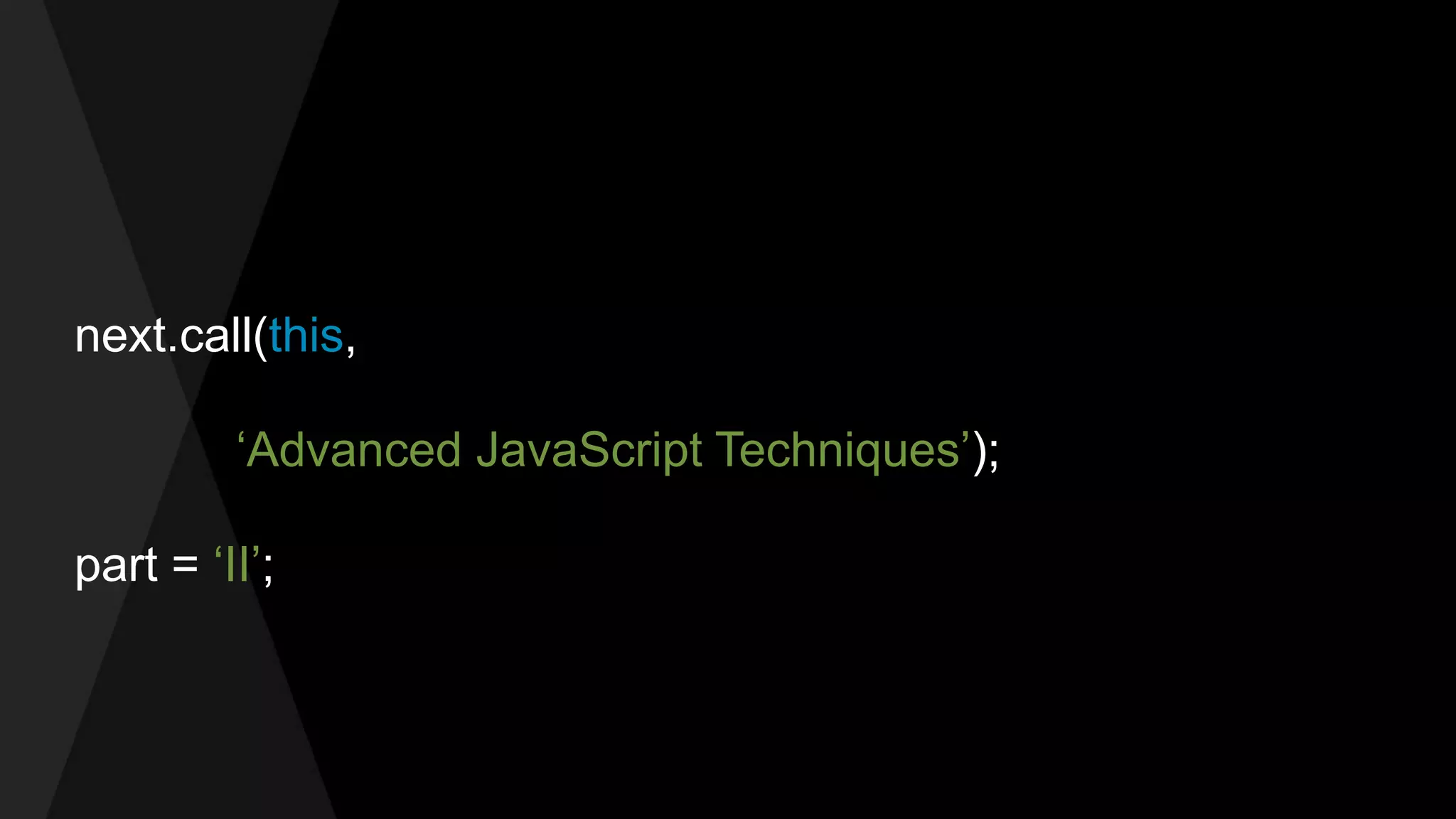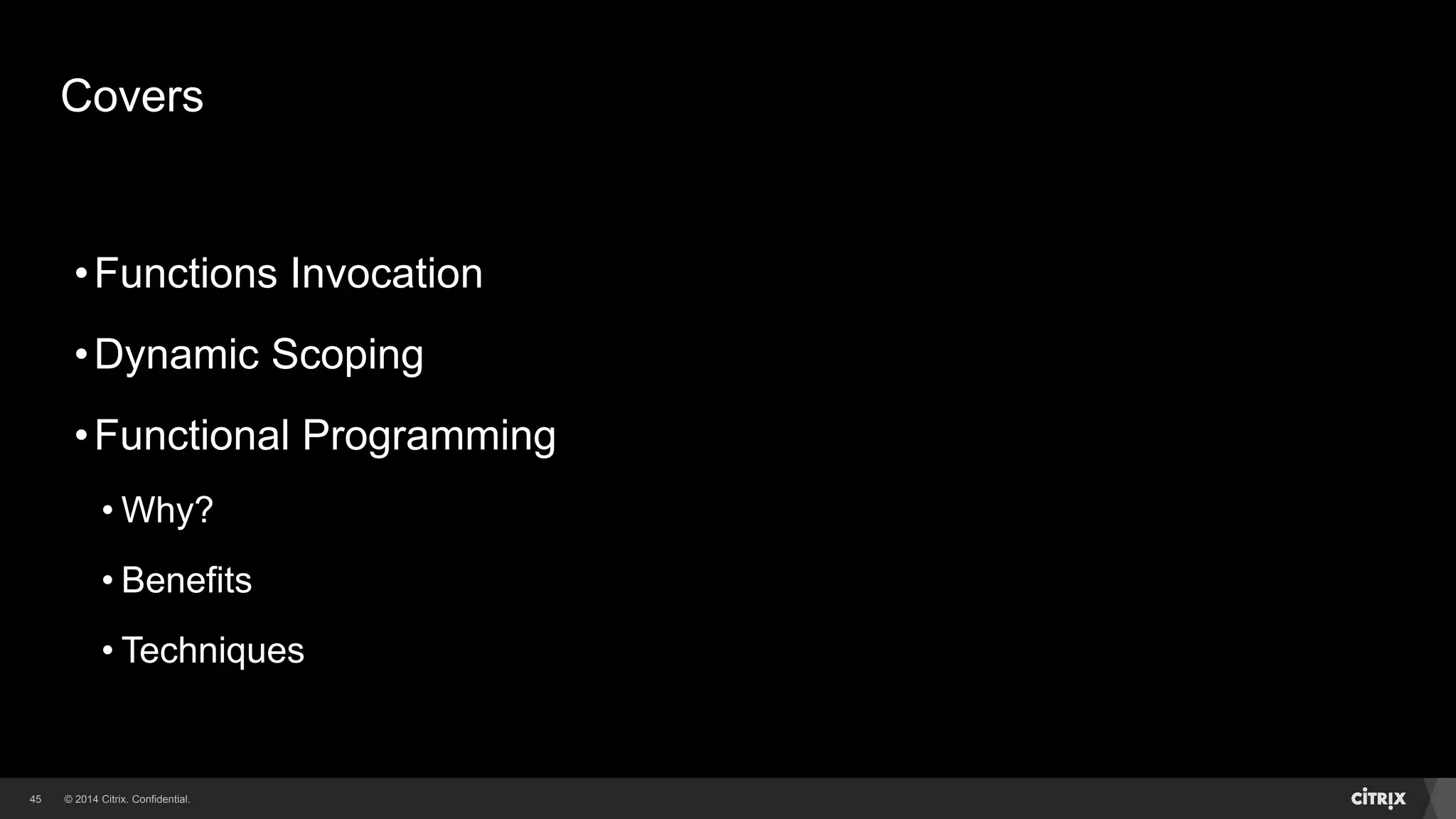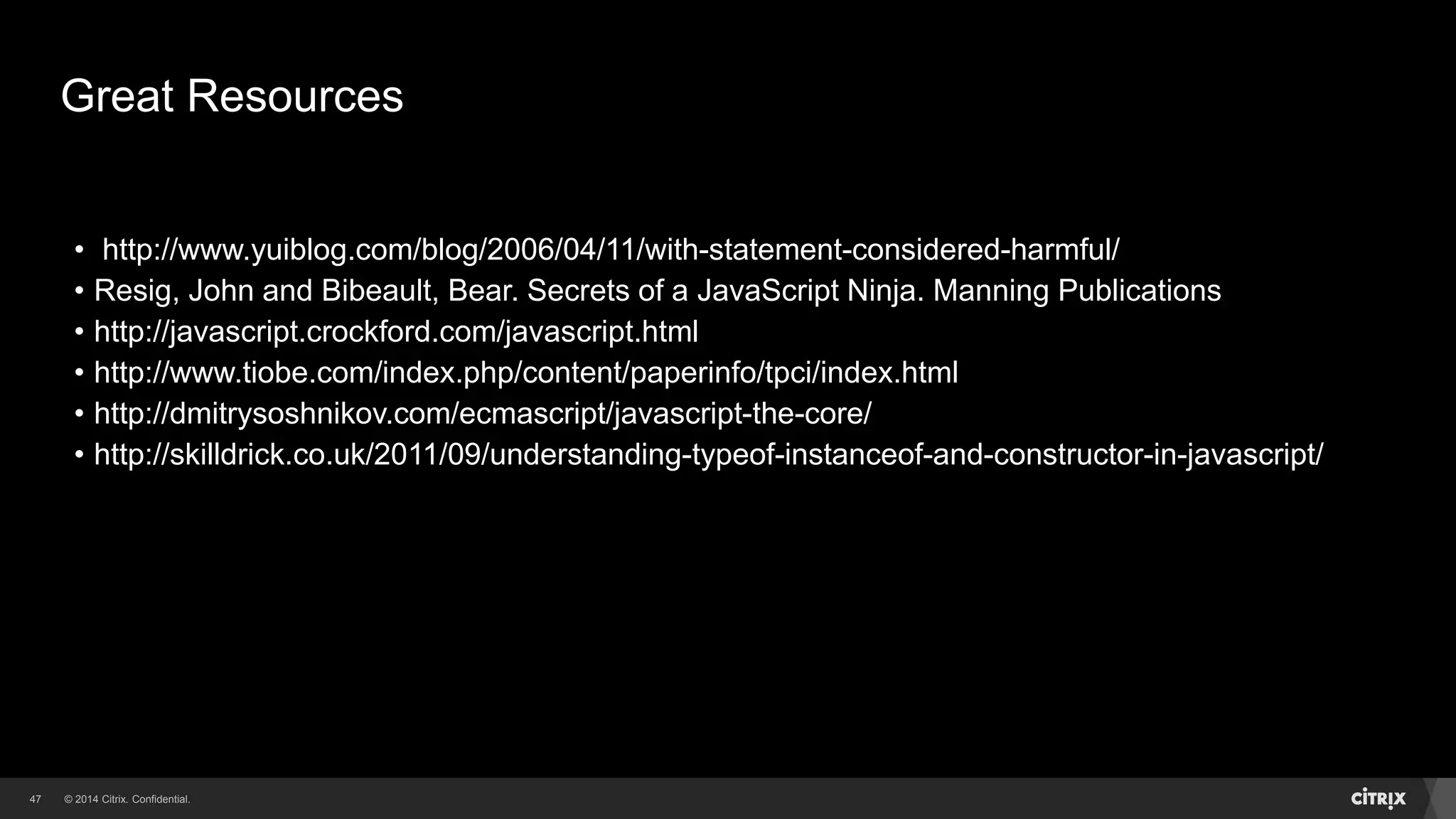The document discusses advanced JavaScript techniques, covering topics like object-oriented programming, prototype-based inheritance, and closures. It emphasizes the importance of understanding JavaScript as a language, including its first-class functions, scope, and strict mode features. Additionally, it highlights popular frameworks like AngularJS and various resources for further learning.
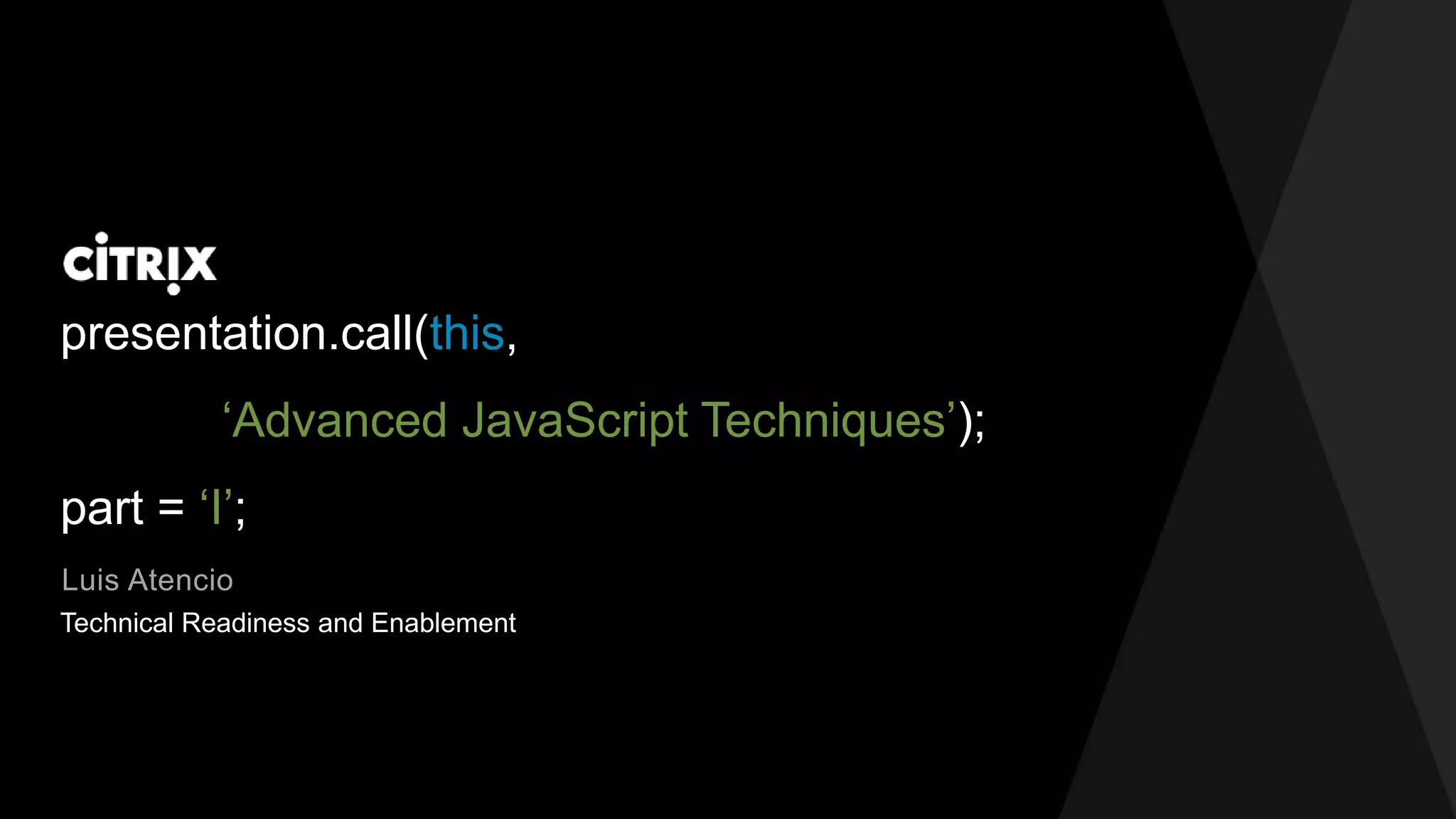
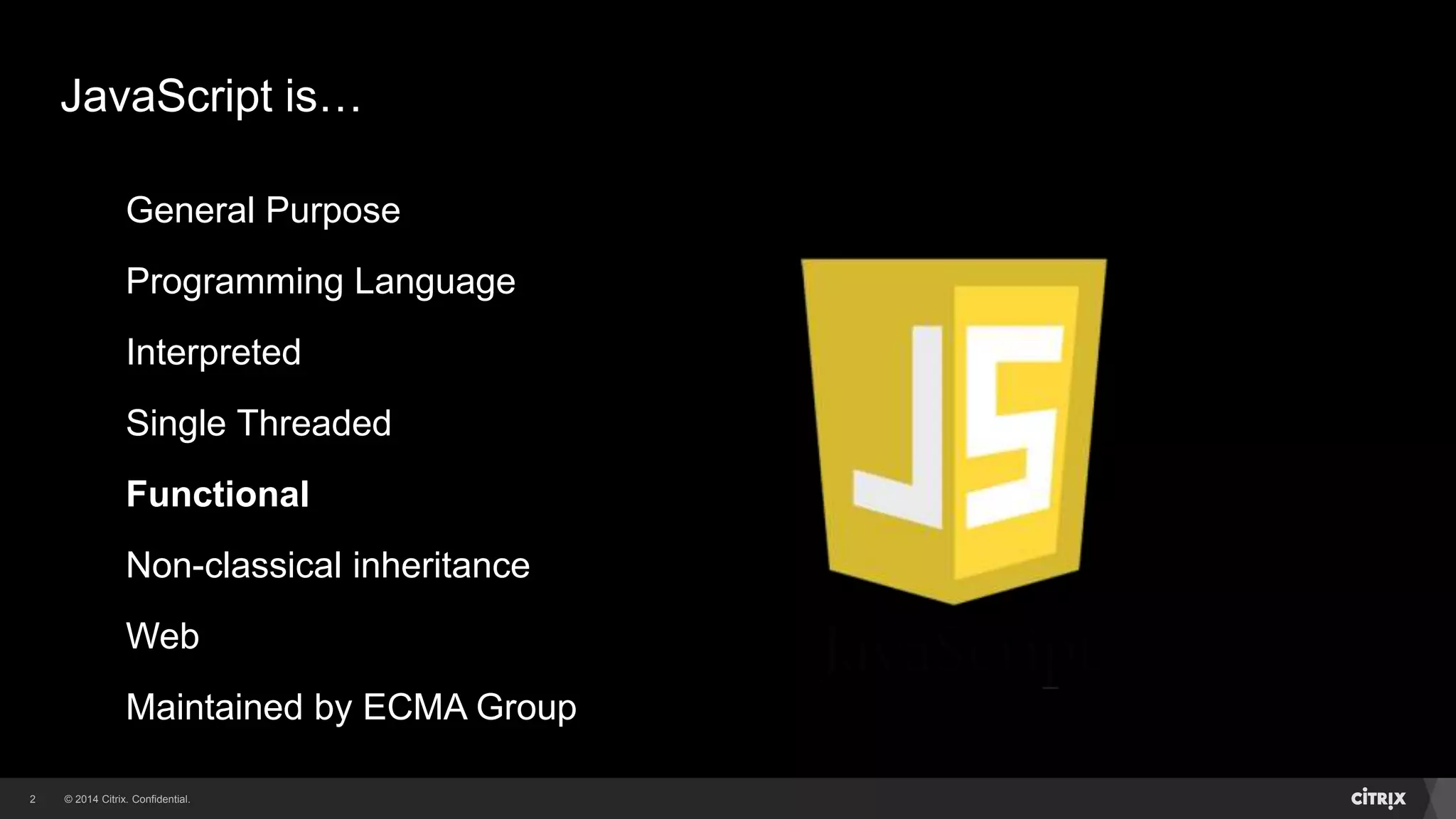
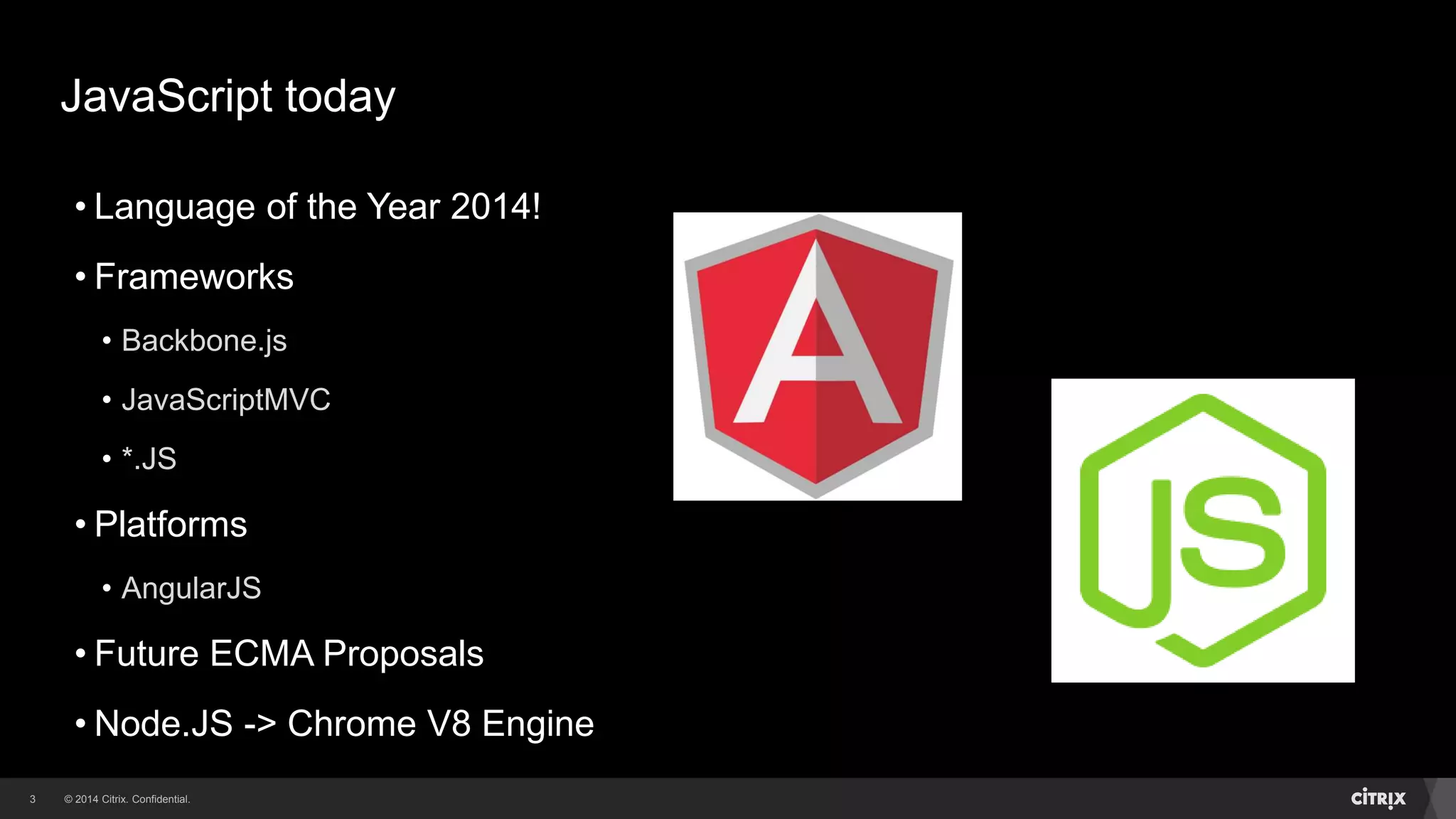
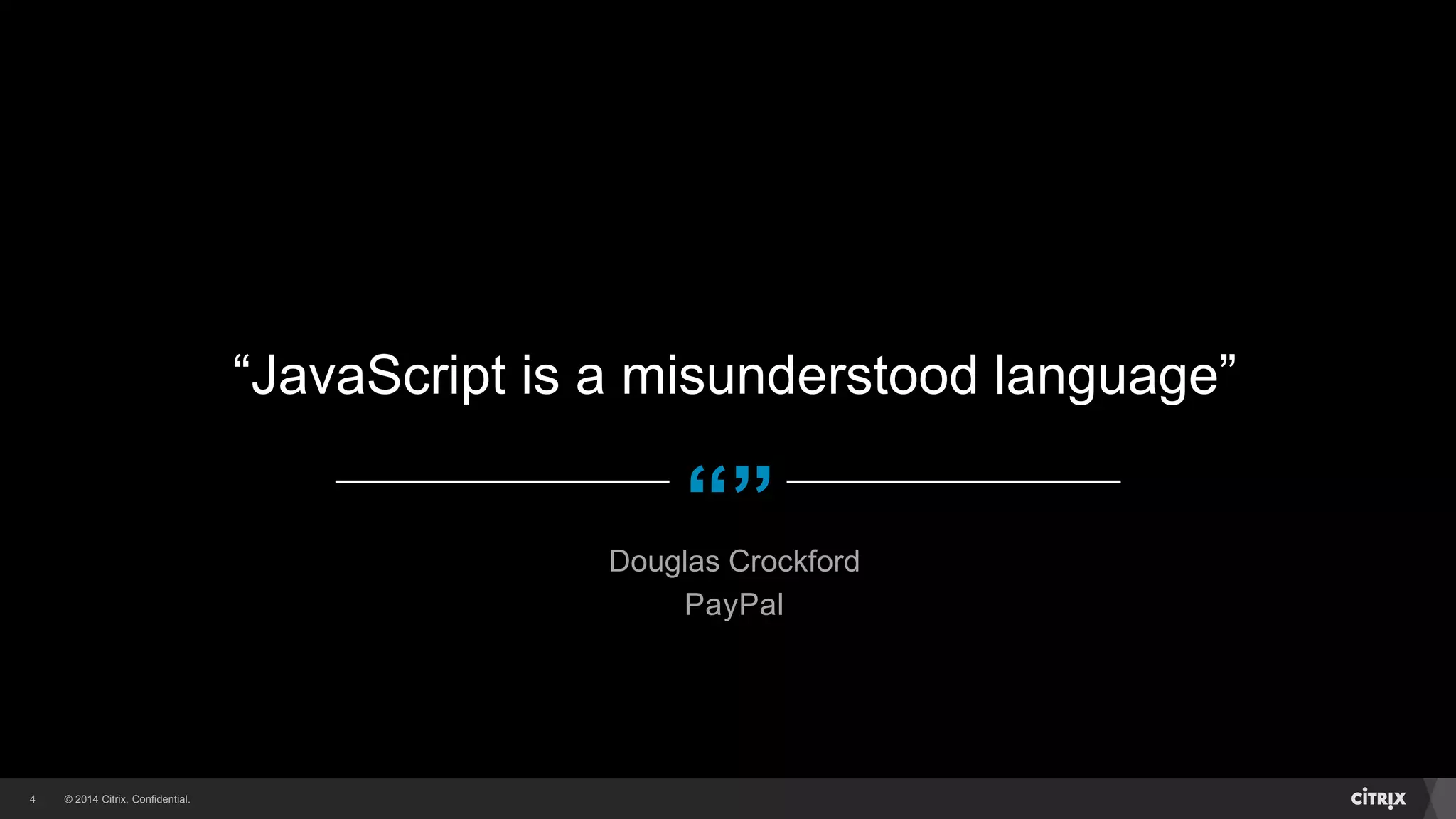
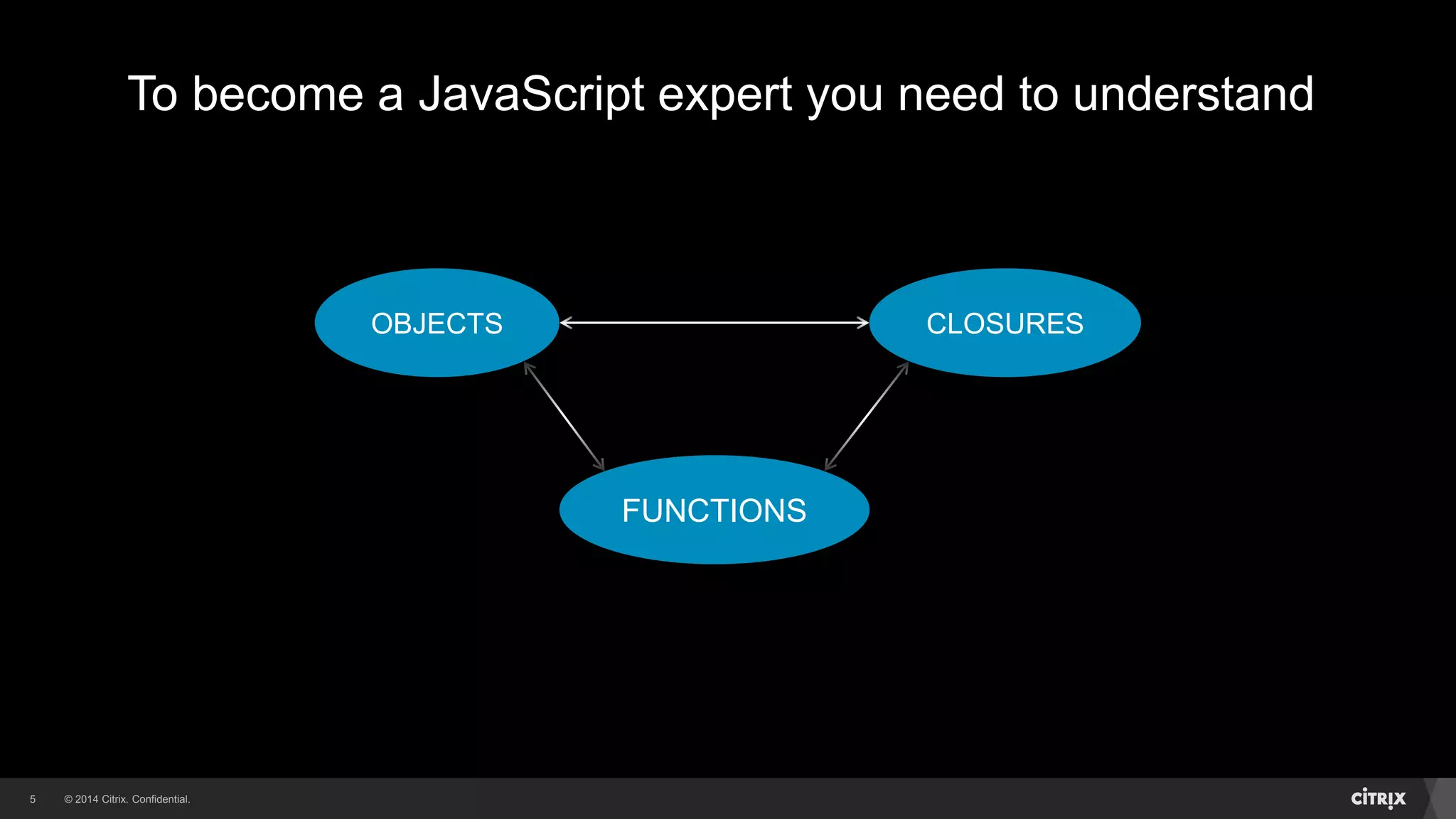

![© 2014 Citrix. Confidential.7 Object instantiation function Person(first, last) { var _firstname = first var _lastname = last this.getFullName = function () { return [_firstname, _lastname].join(“ ”); } } var p = new Person(); var Person = {first: ‘Luis’, last: ‘Atencio’}; var p = Object.create(Person); instanceof checks work on both scenarios This is the prototype](https://image.slidesharecdn.com/javascript1-150217163539-conversion-gate02/75/Java-script-Techniques-Part-I-7-2048.jpg)
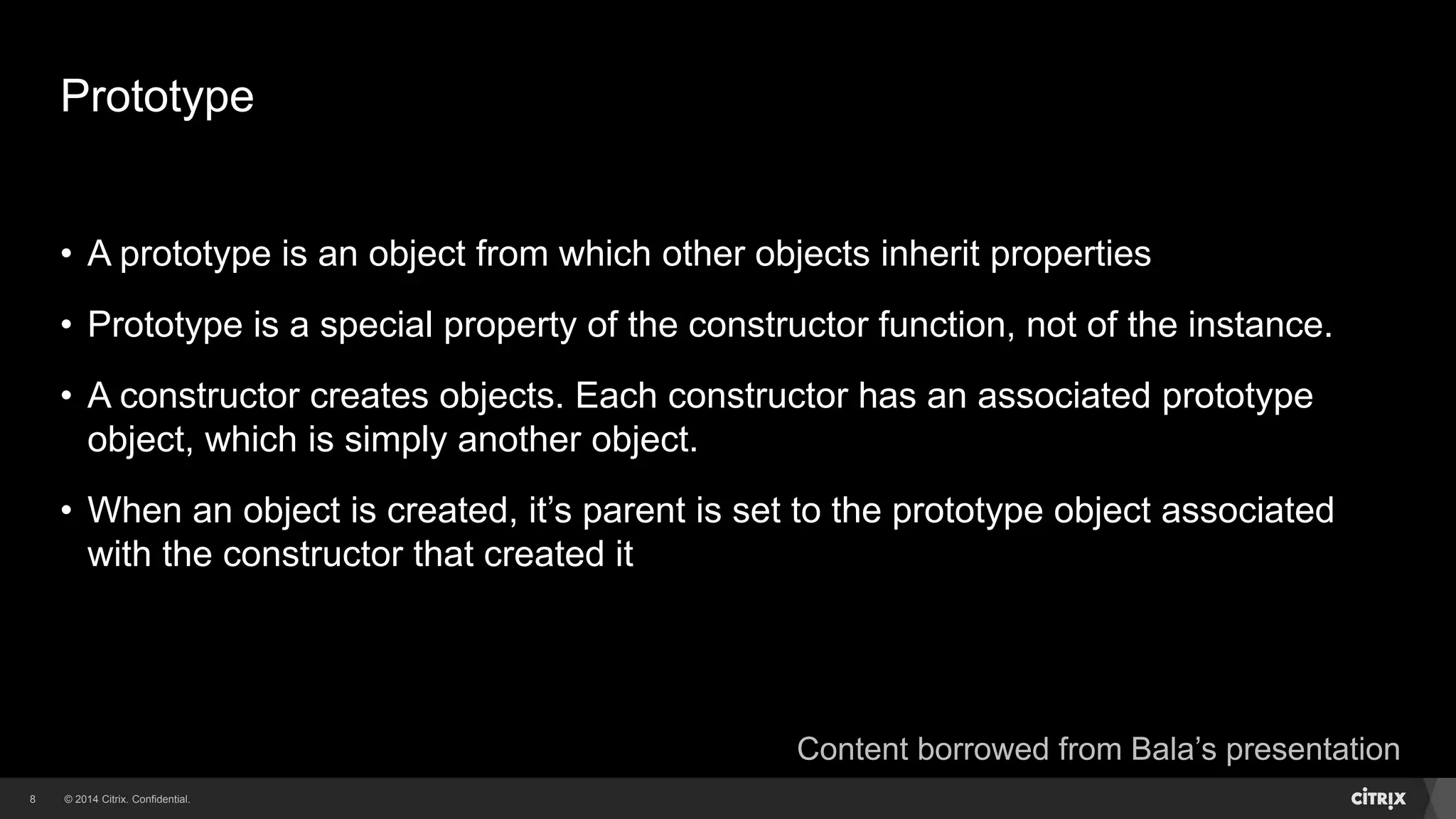
![© 2014 Citrix. Confidential.9 Dissecting an Object person Object person [[Prototype]] Object constructor hasOwnProperty isPrototypeOf propertyIsEnumerable toLocaleString toString valueOf [[Prototype]] the __proto__ property the prototype object null var person = {}; Content borrowed from Bala’s presentation](https://image.slidesharecdn.com/javascript1-150217163539-conversion-gate02/75/Java-script-Techniques-Part-I-9-2048.jpg)
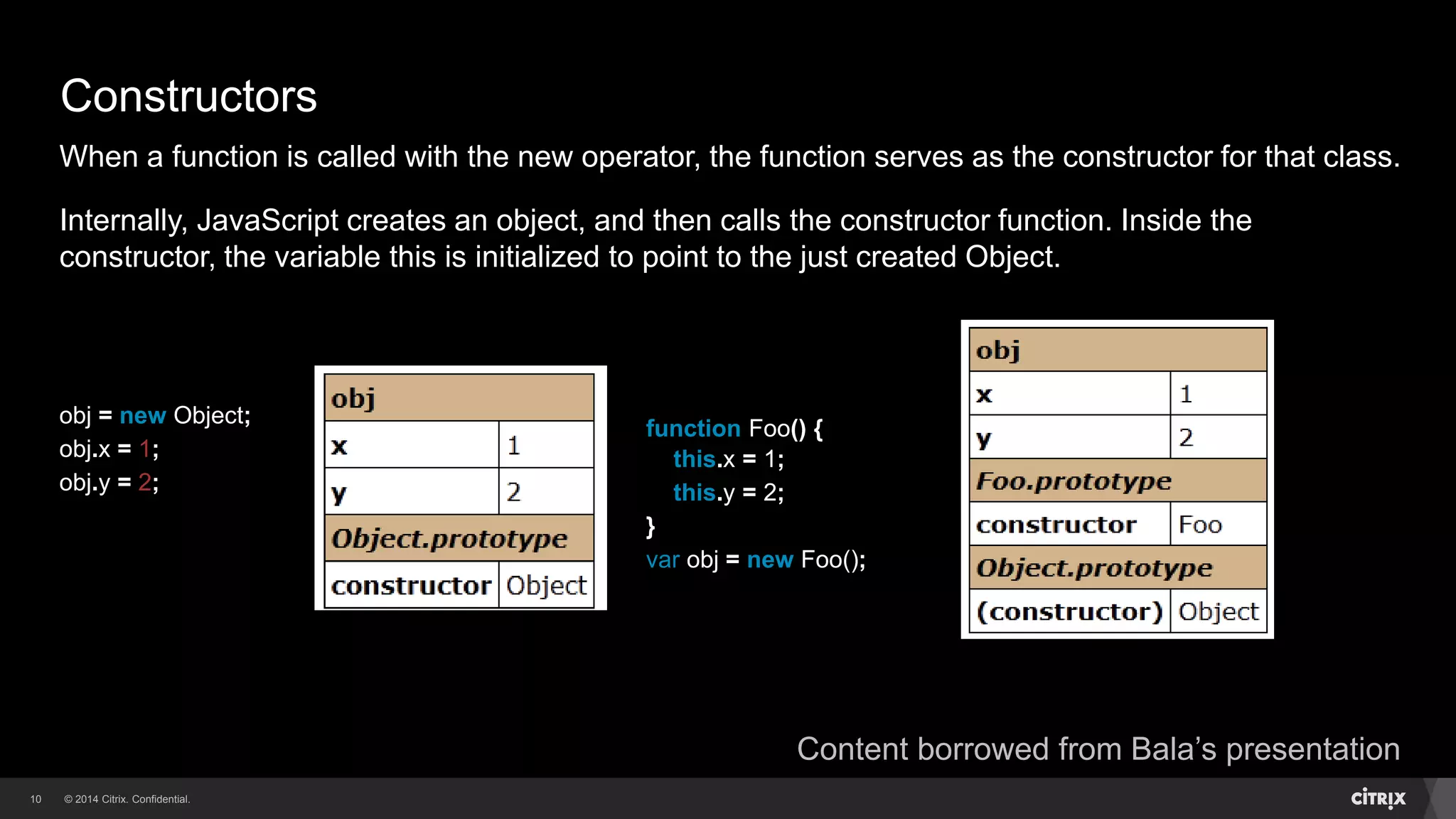
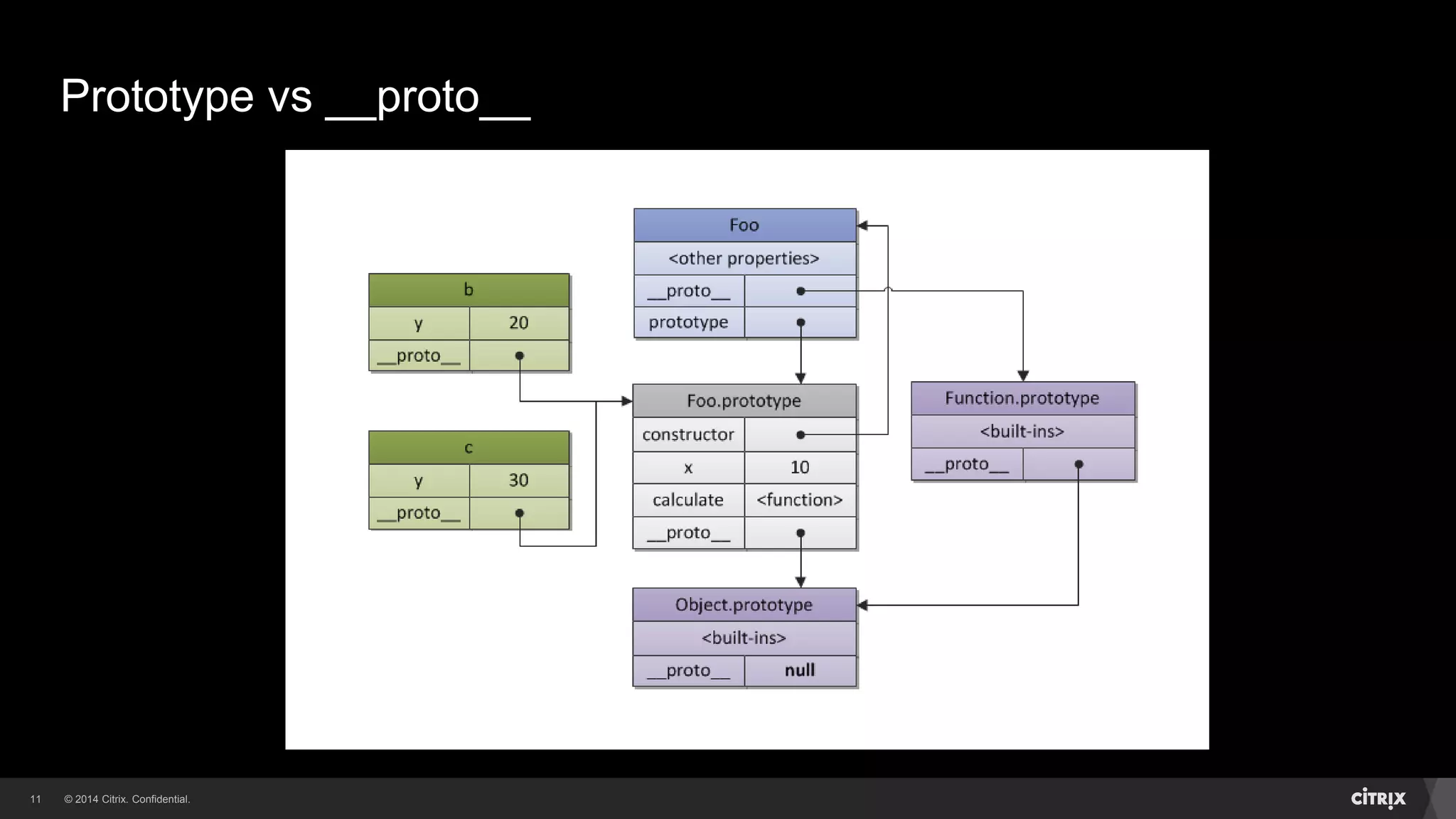
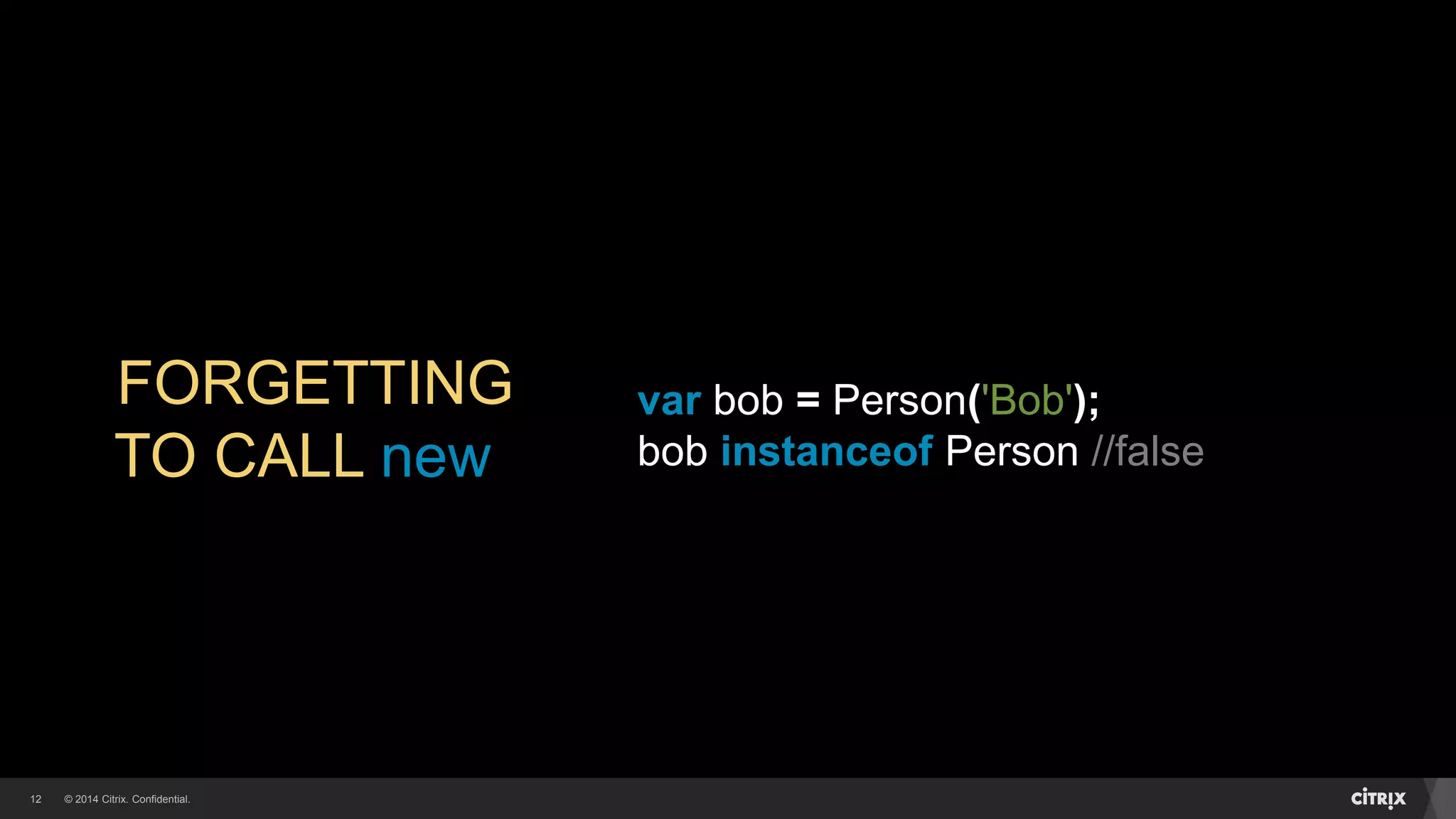
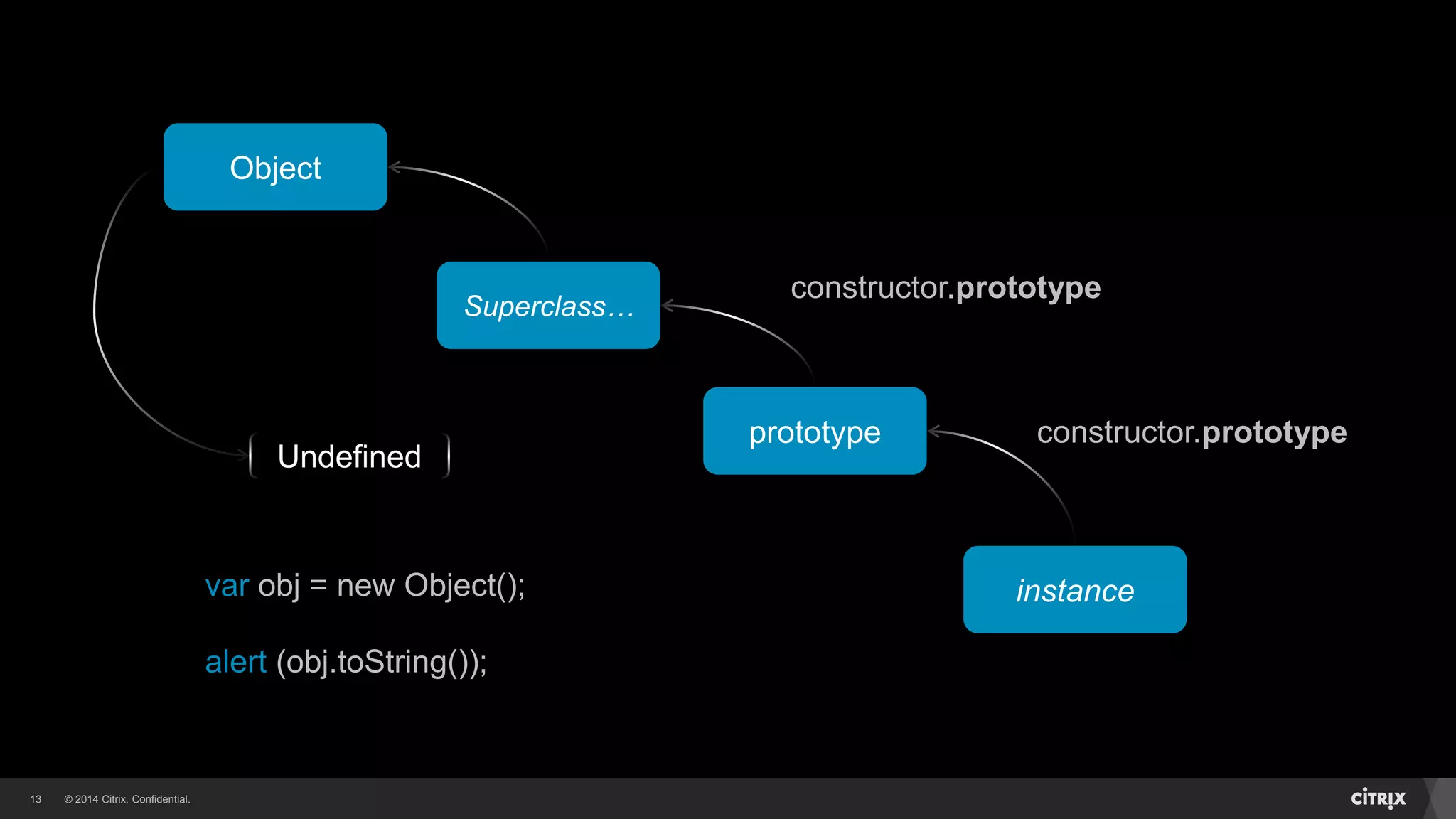
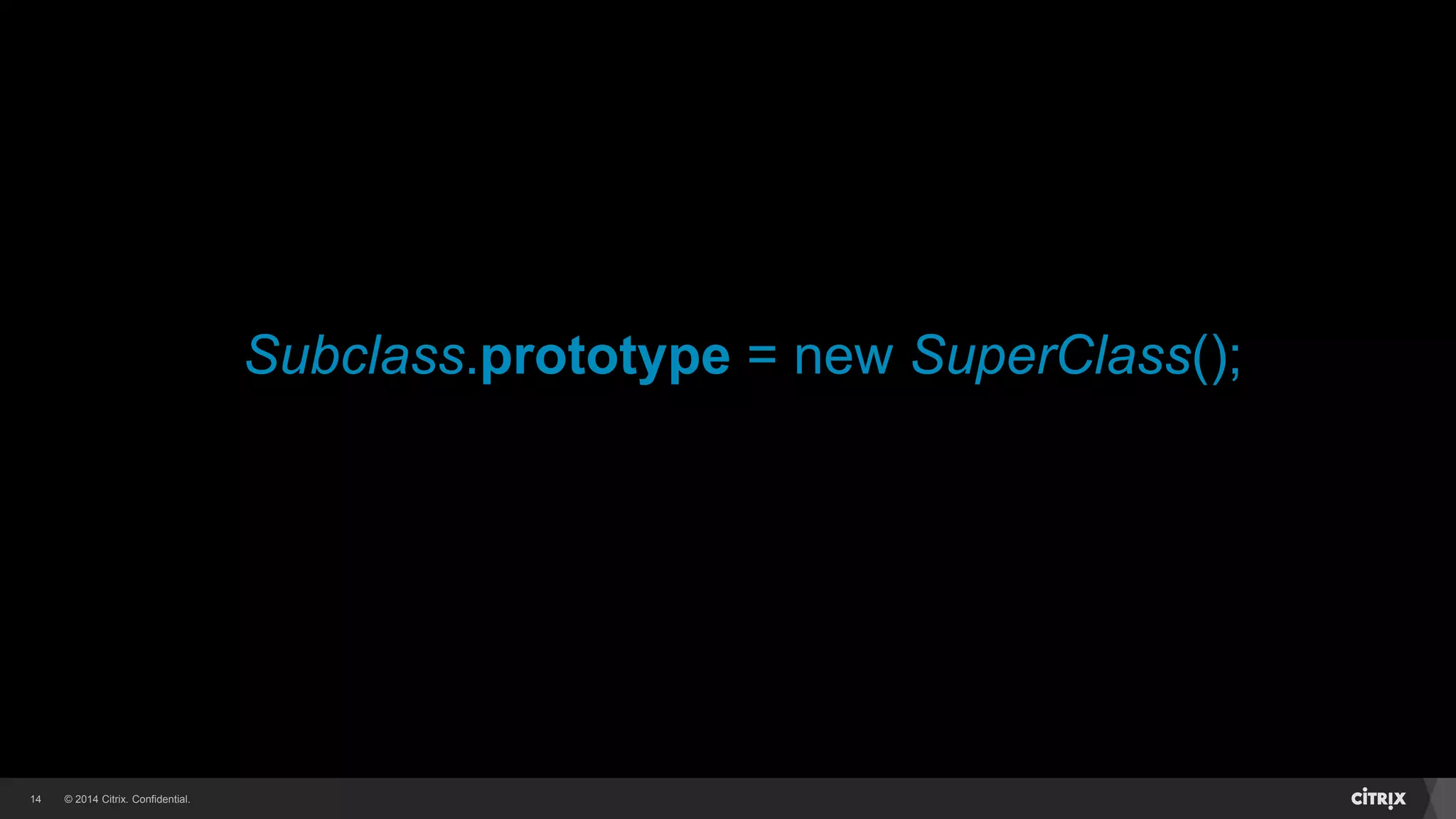
![© 2014 Citrix. Confidential.15 instanceof VS typeof • Typeof is a unary operator • Good for telling apart the basic type of object: number, string, object, function… • typeof null === ‘object’ • typeof [] === ‘object’ • Instanceof is a binary operator • Inspects prototype chain • Use to tell the type of object an instance belongs to • p instanceof Person • p instanceof Object](https://image.slidesharecdn.com/javascript1-150217163539-conversion-gate02/75/Java-script-Techniques-Part-I-15-2048.jpg)
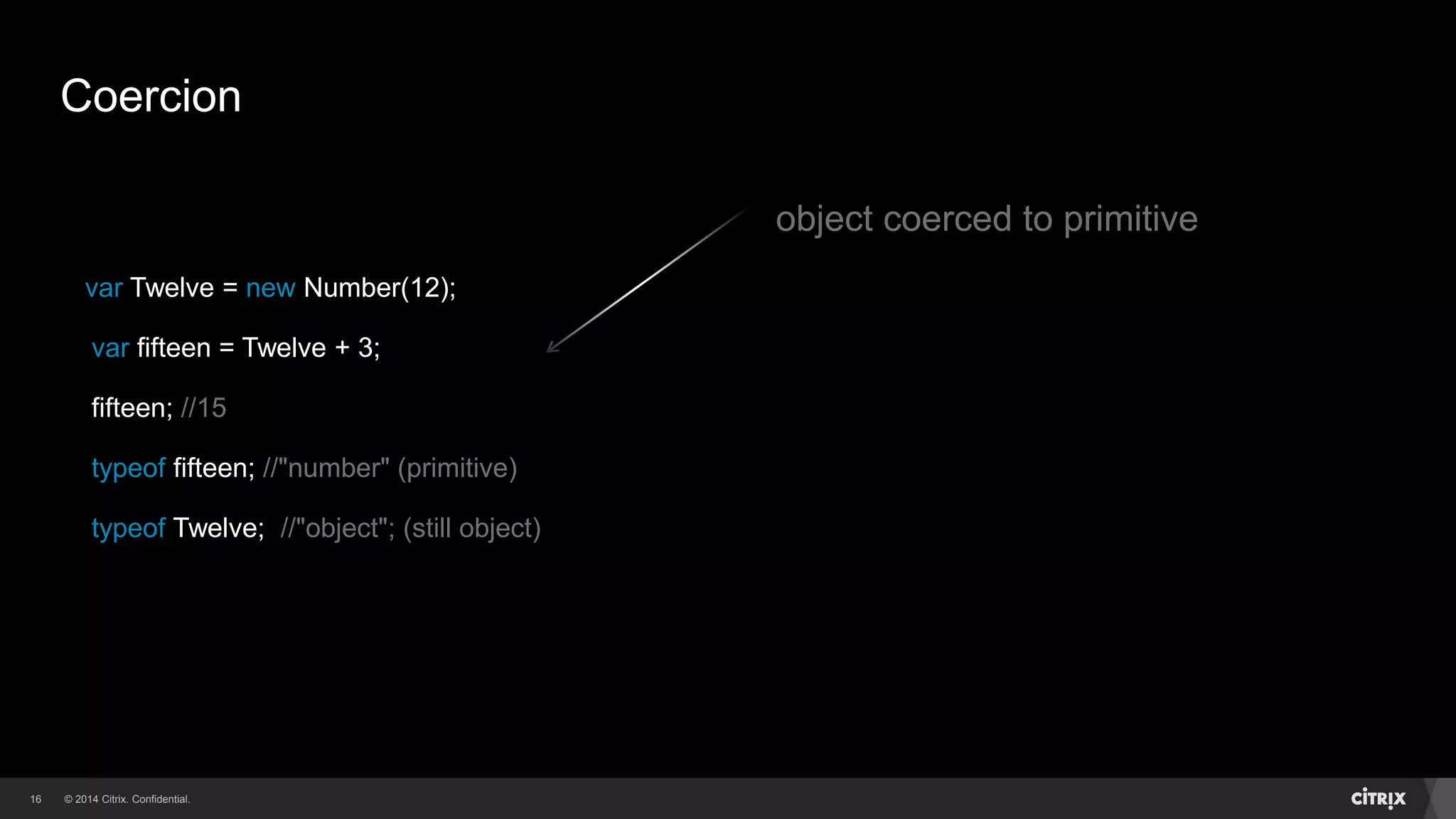
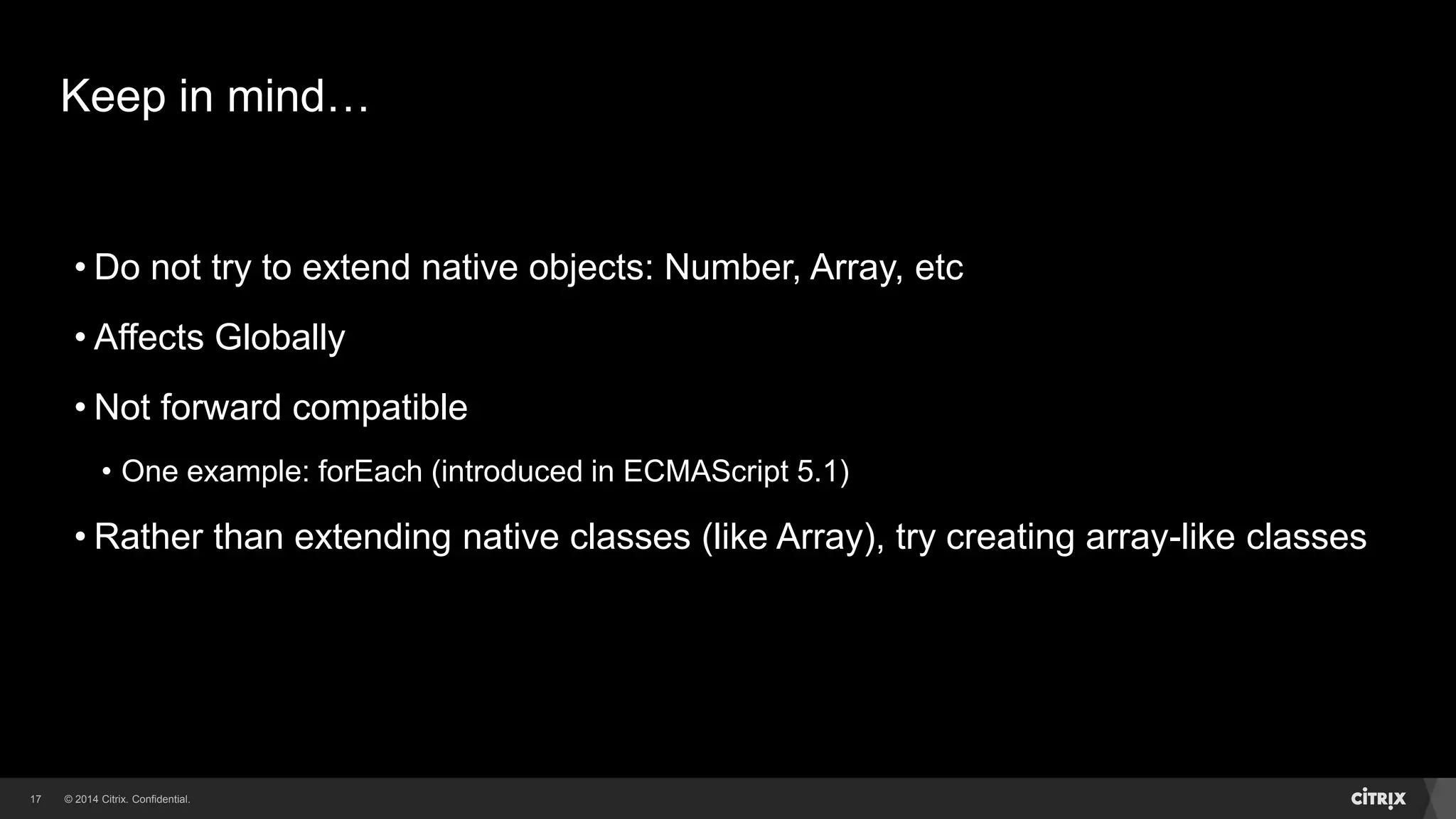

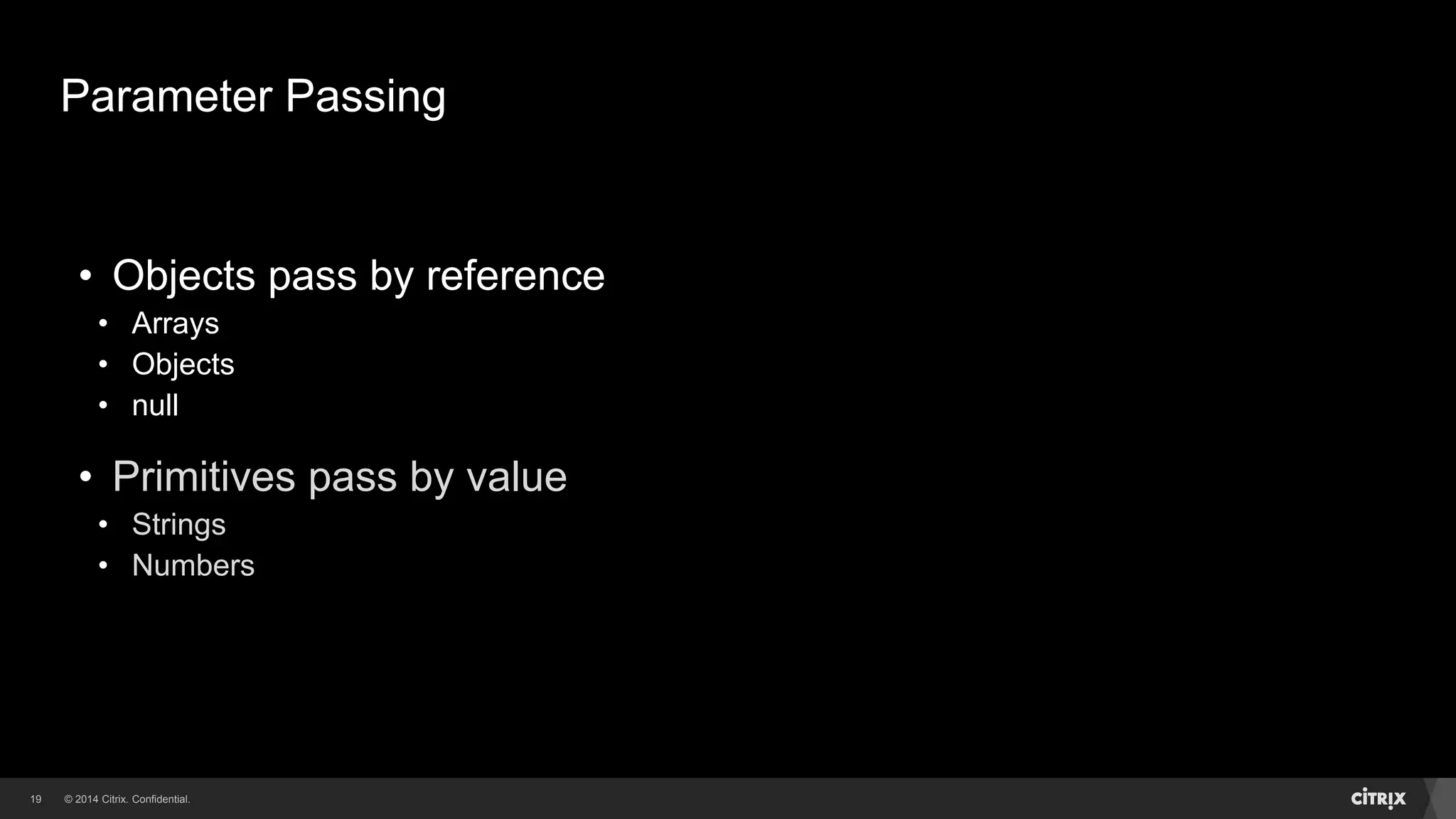
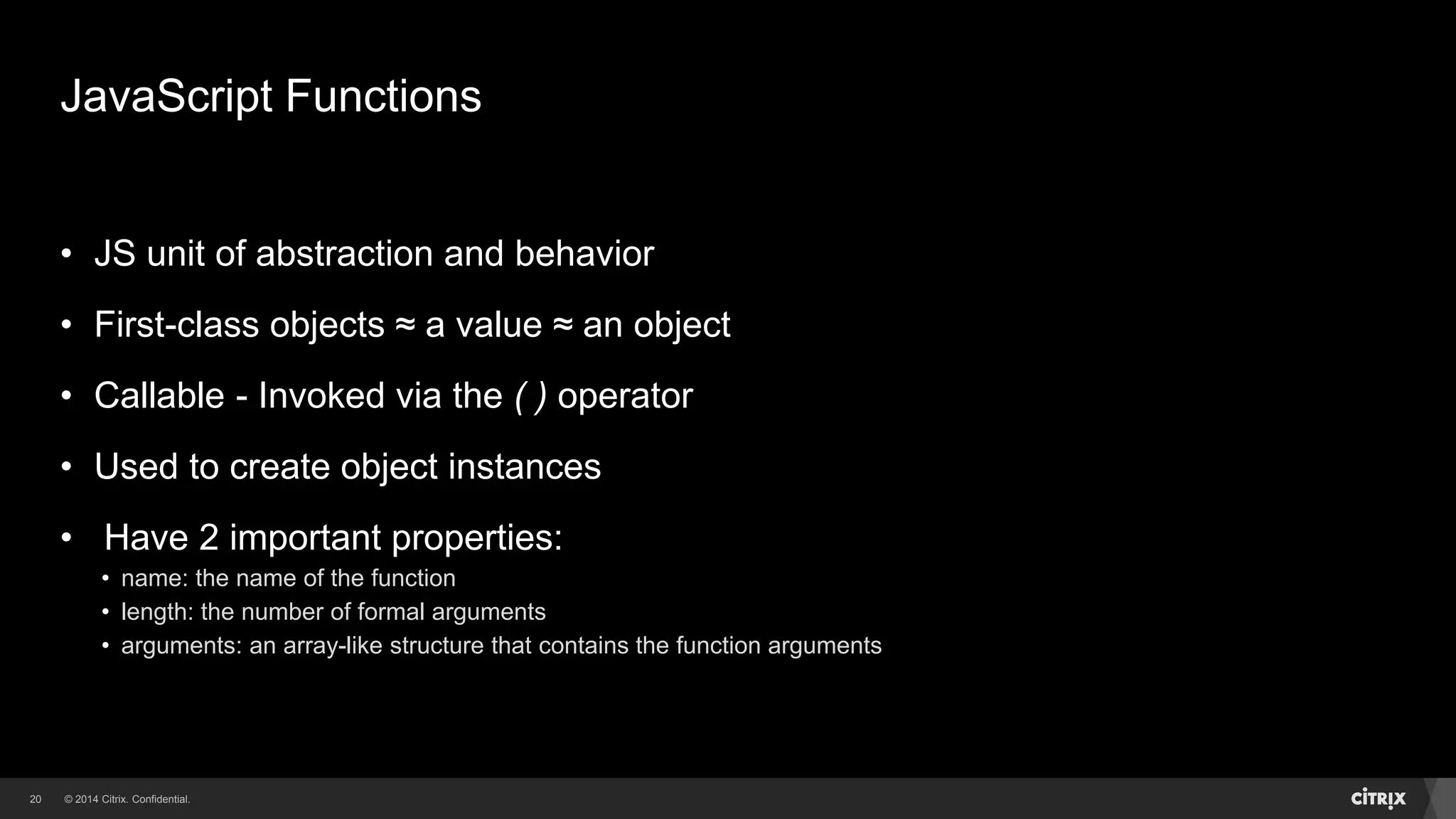
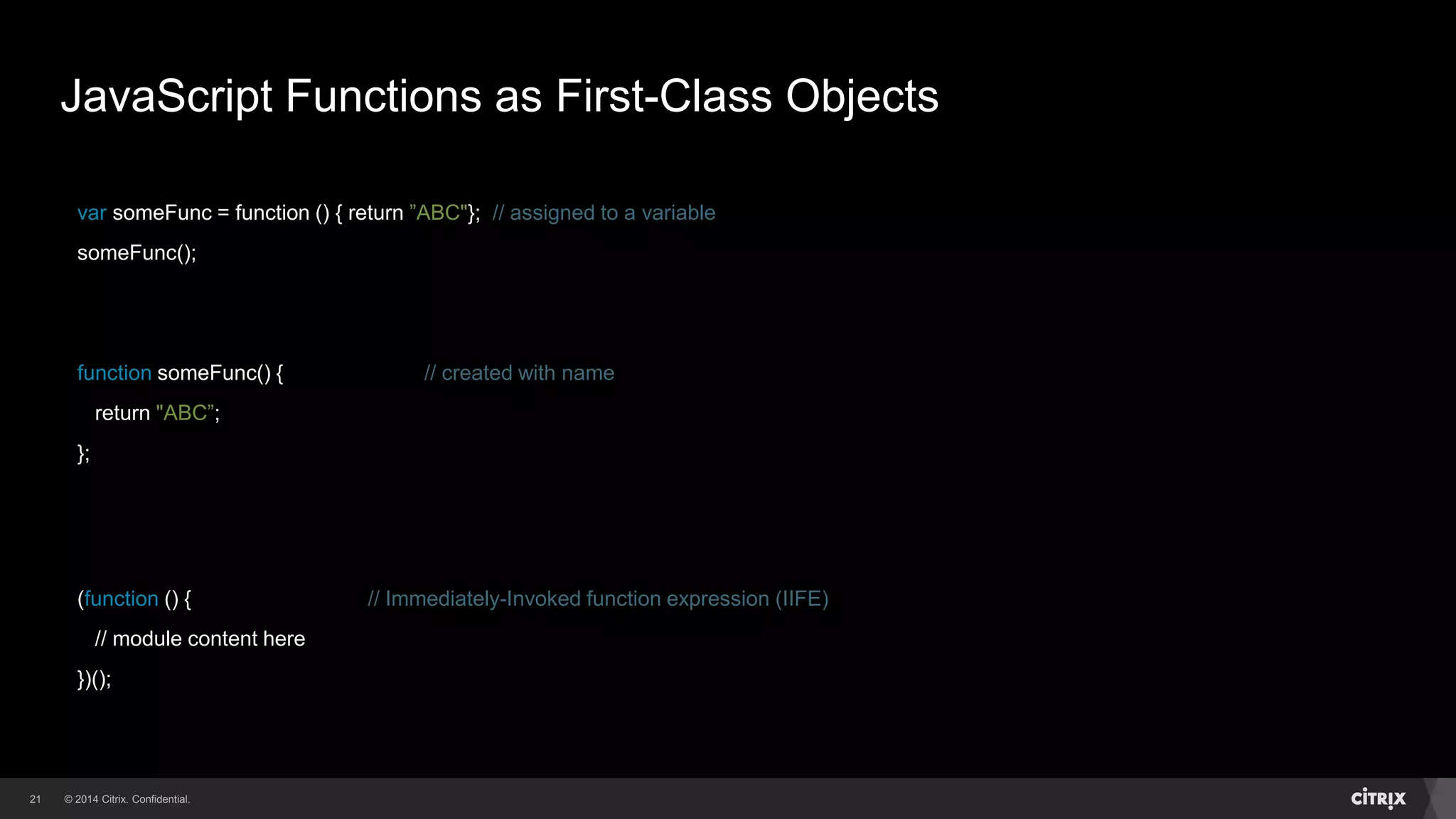
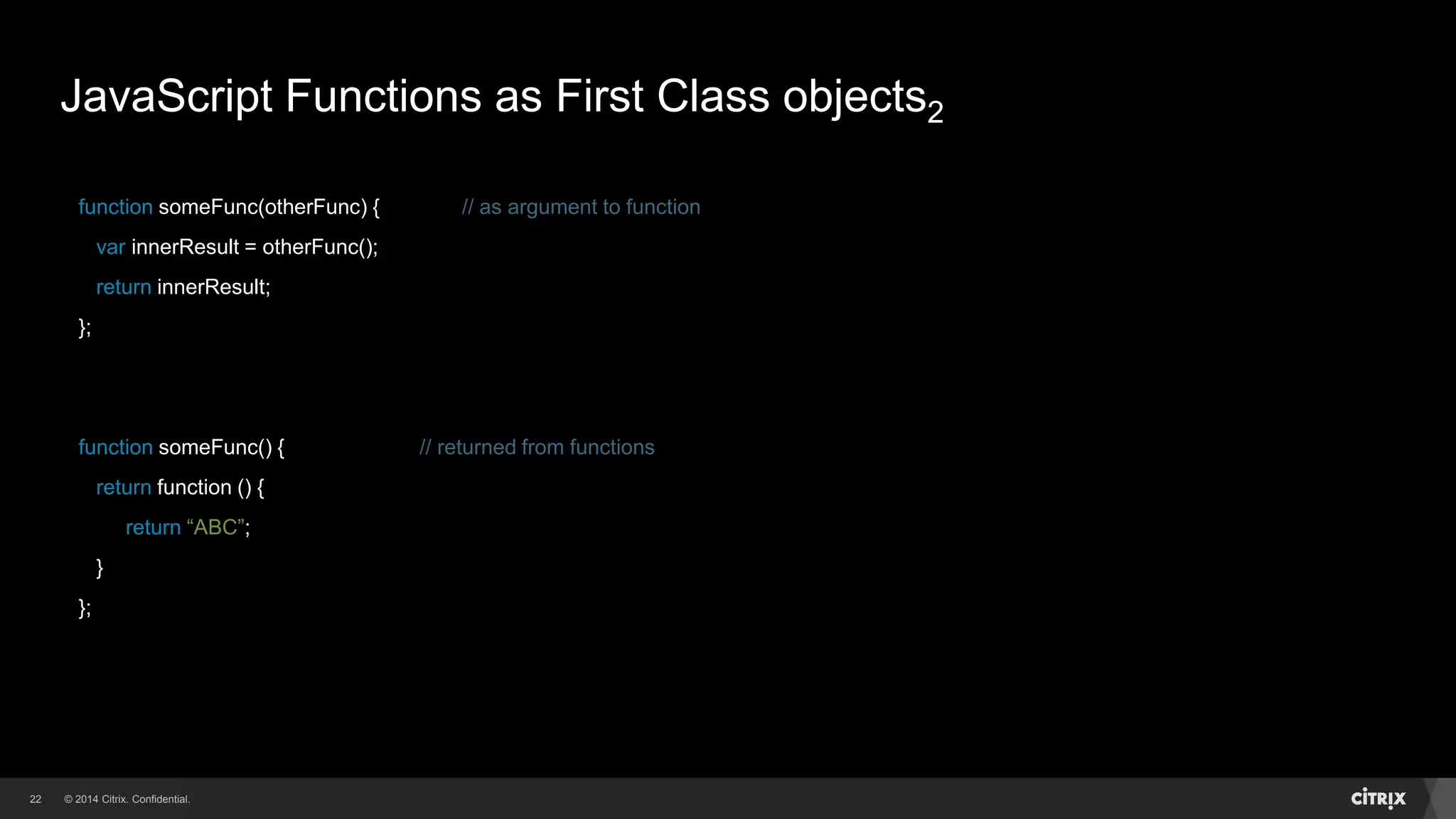

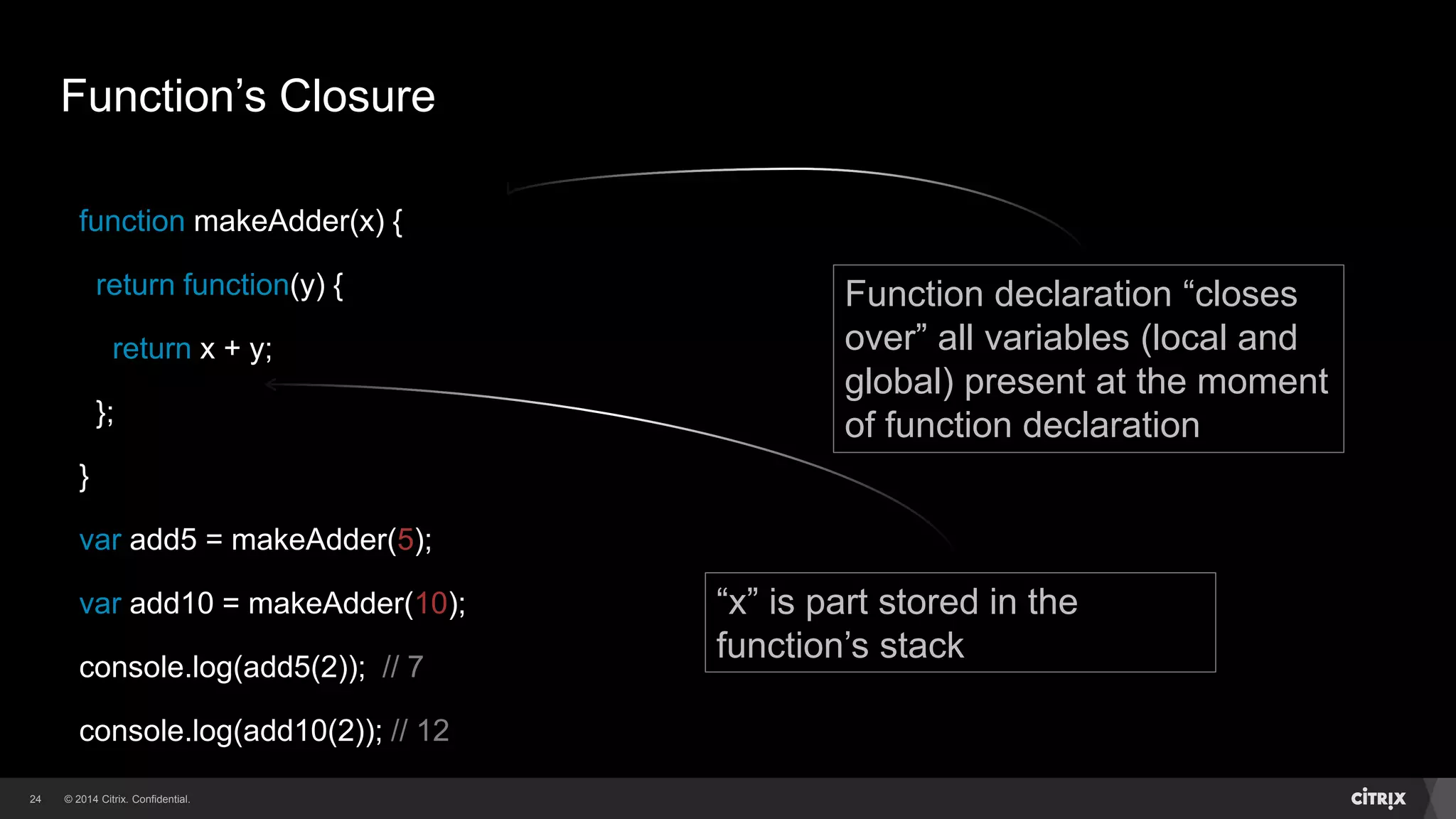
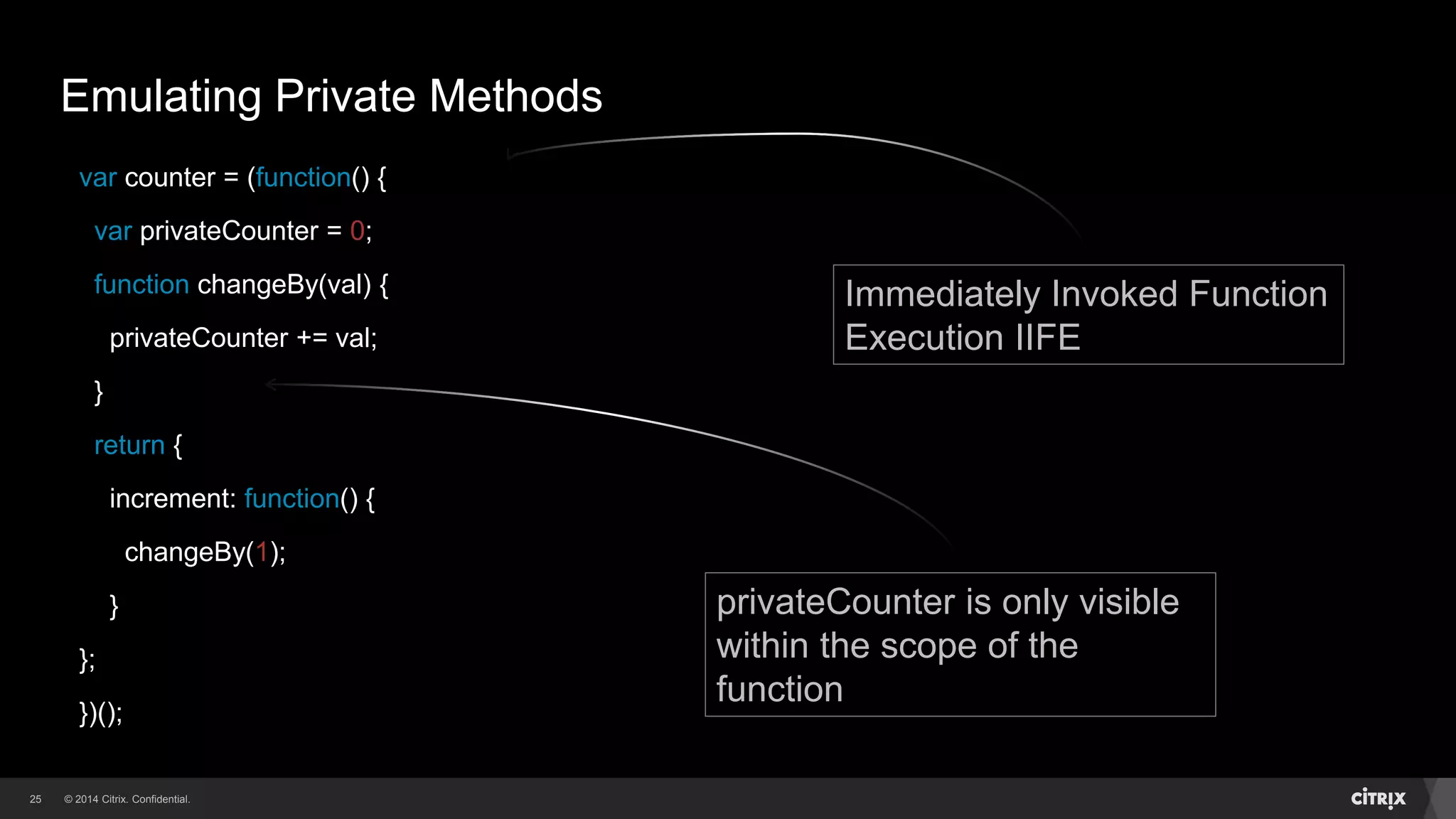
![© 2014 Citrix. Confidential.26 Duck Typing function myArray() { } MyArray.prototype.length = 0; (function() { var methods = [‘push’, ‘pop’, ‘slice’, ‘join’]; for(var i = 0; i < methods.length; i++)(function(name) { MyArray.prototype[name] = function() { return Array.prototype[name].apply(this, arguments); }; })(methods[i]); })(); var myObj = new MyArray(); myObj.push(1,2,3);](https://image.slidesharecdn.com/javascript1-150217163539-conversion-gate02/75/Java-script-Techniques-Part-I-26-2048.jpg)

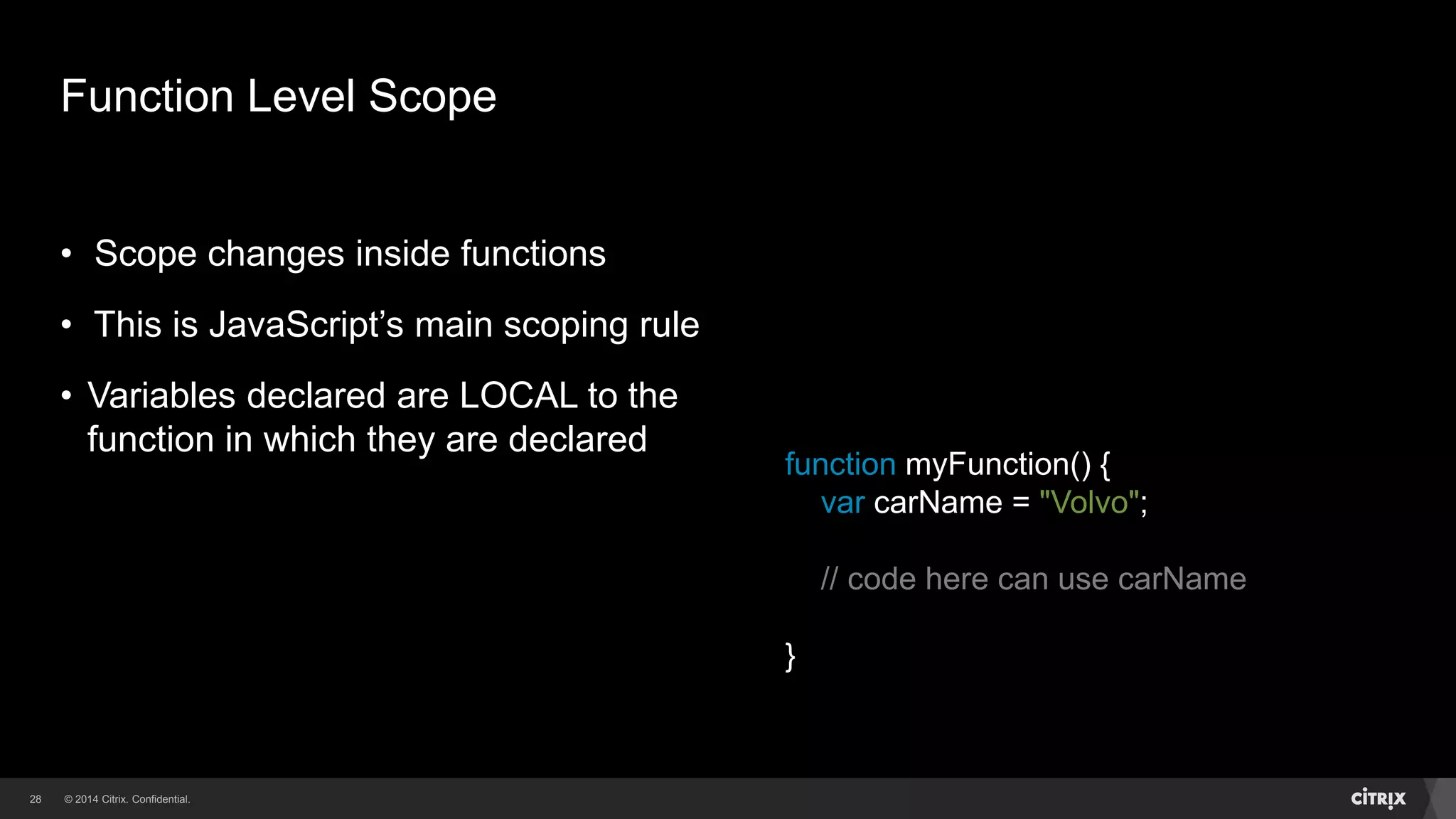
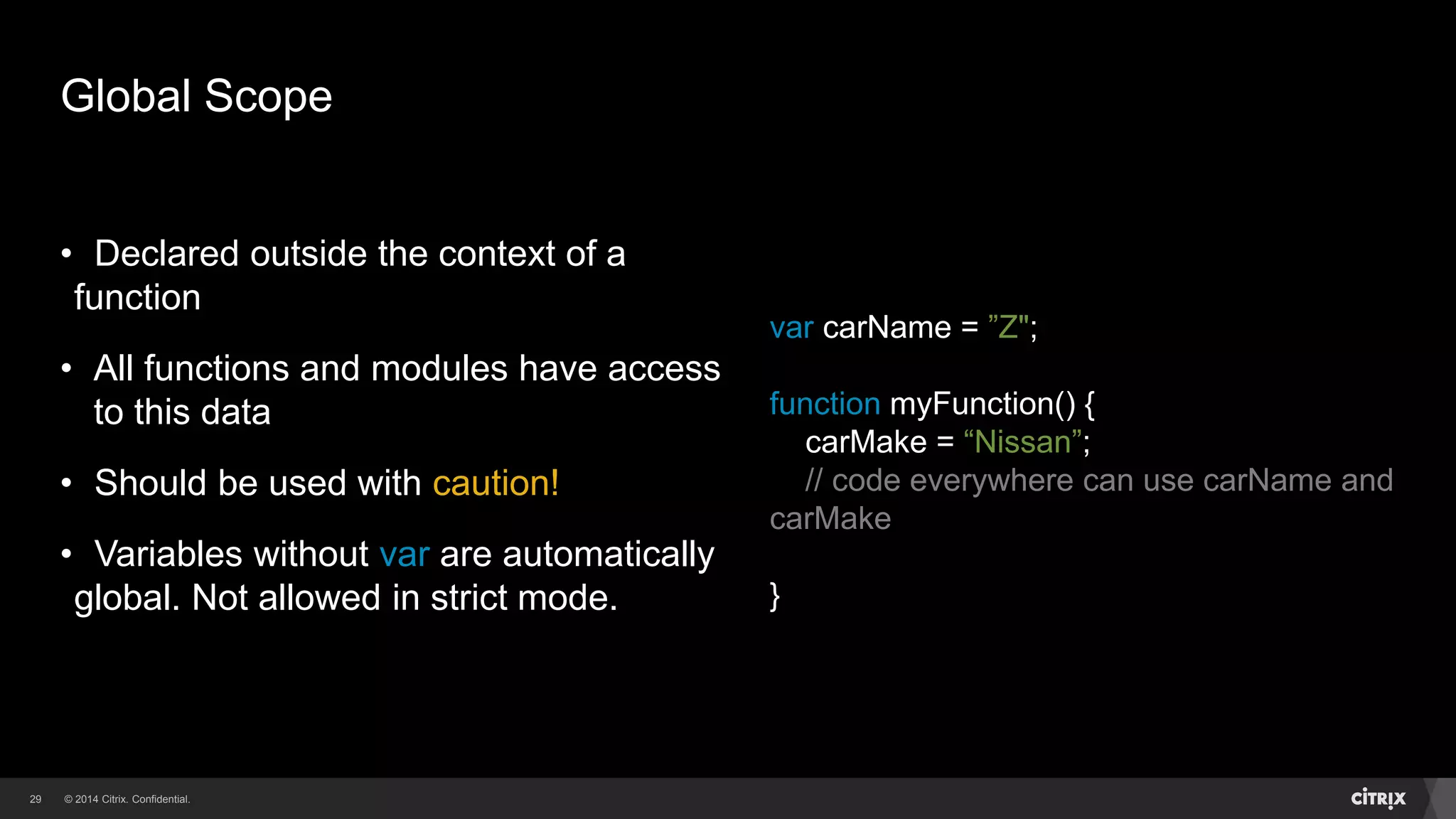
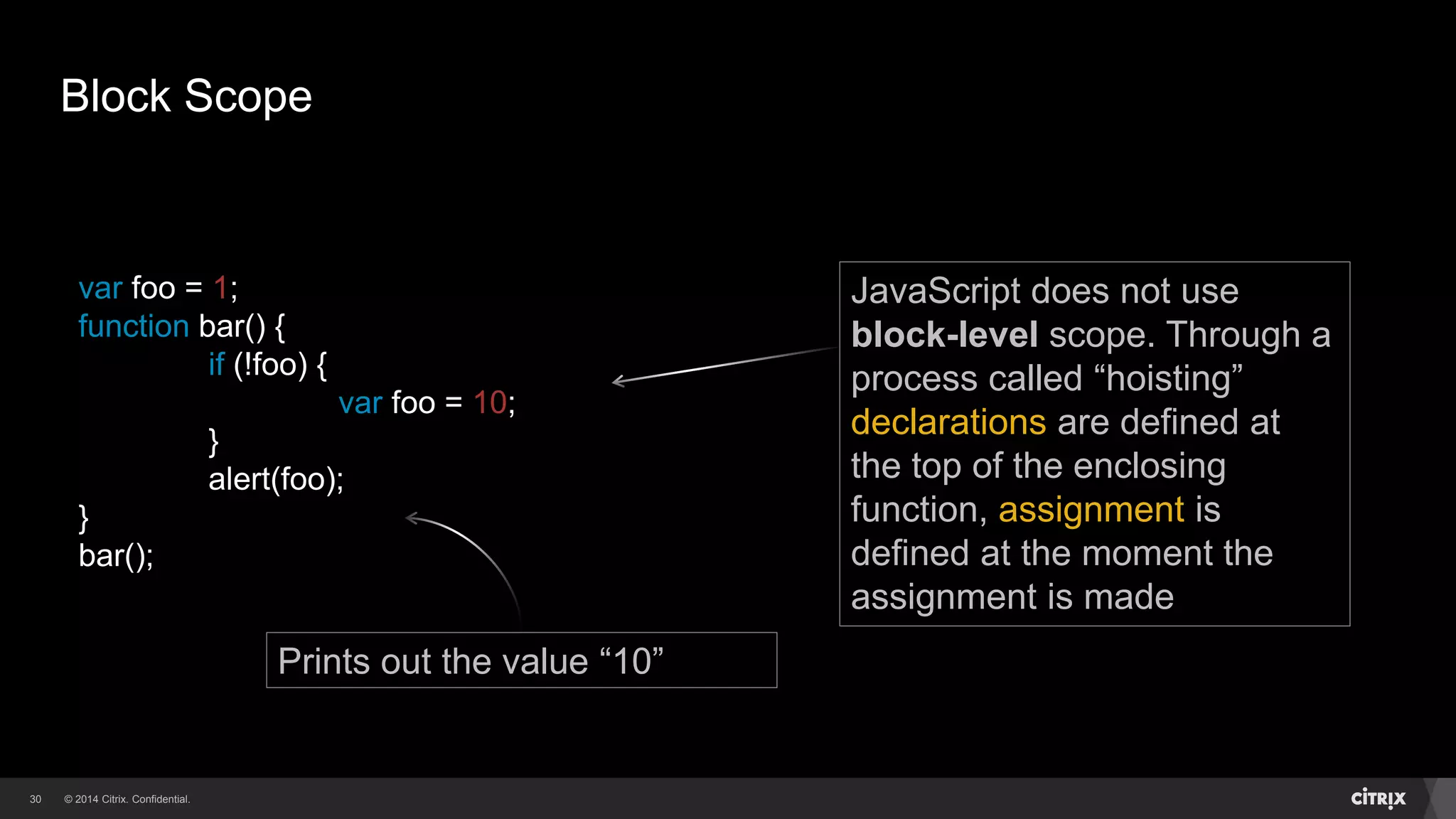
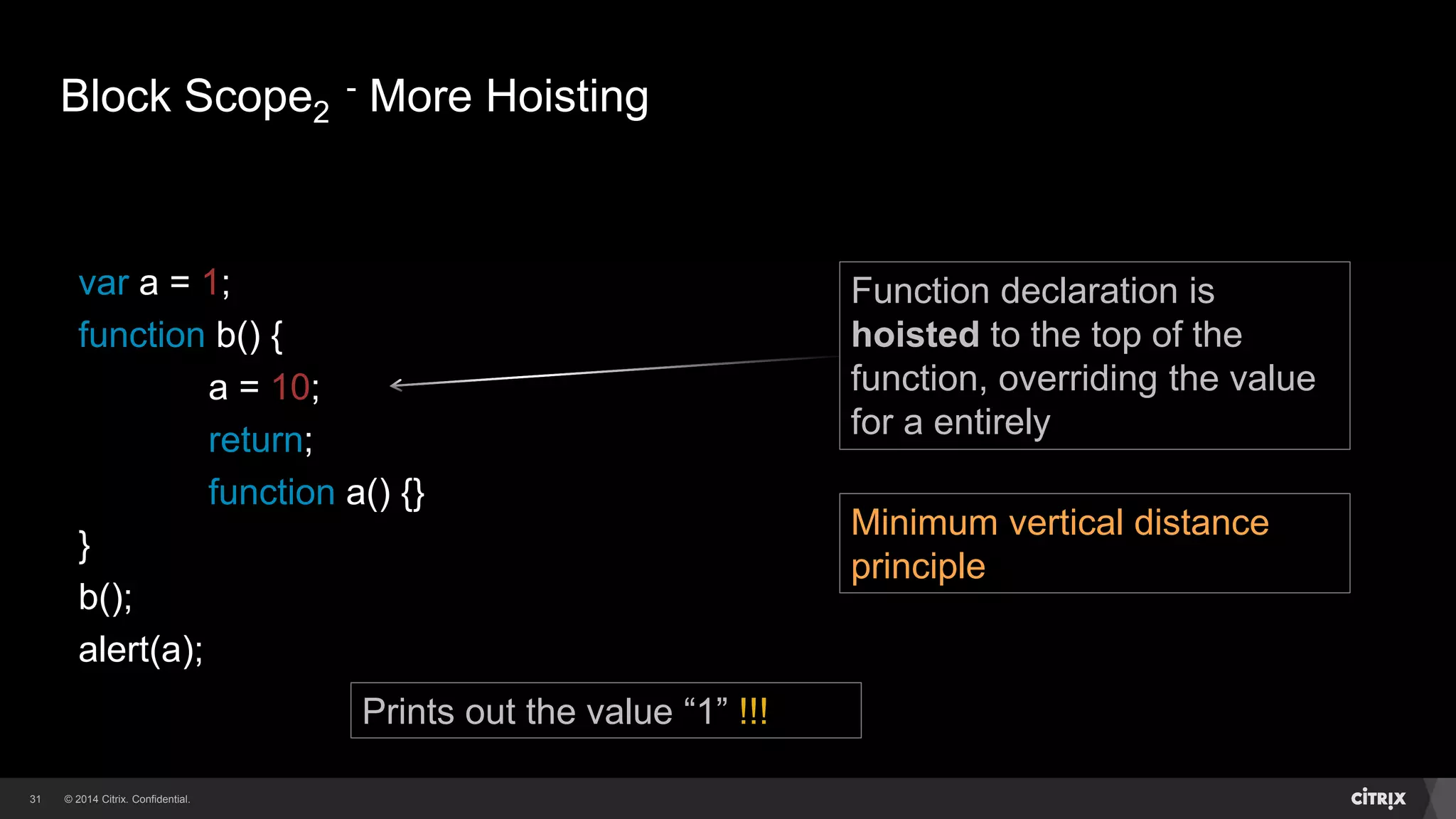
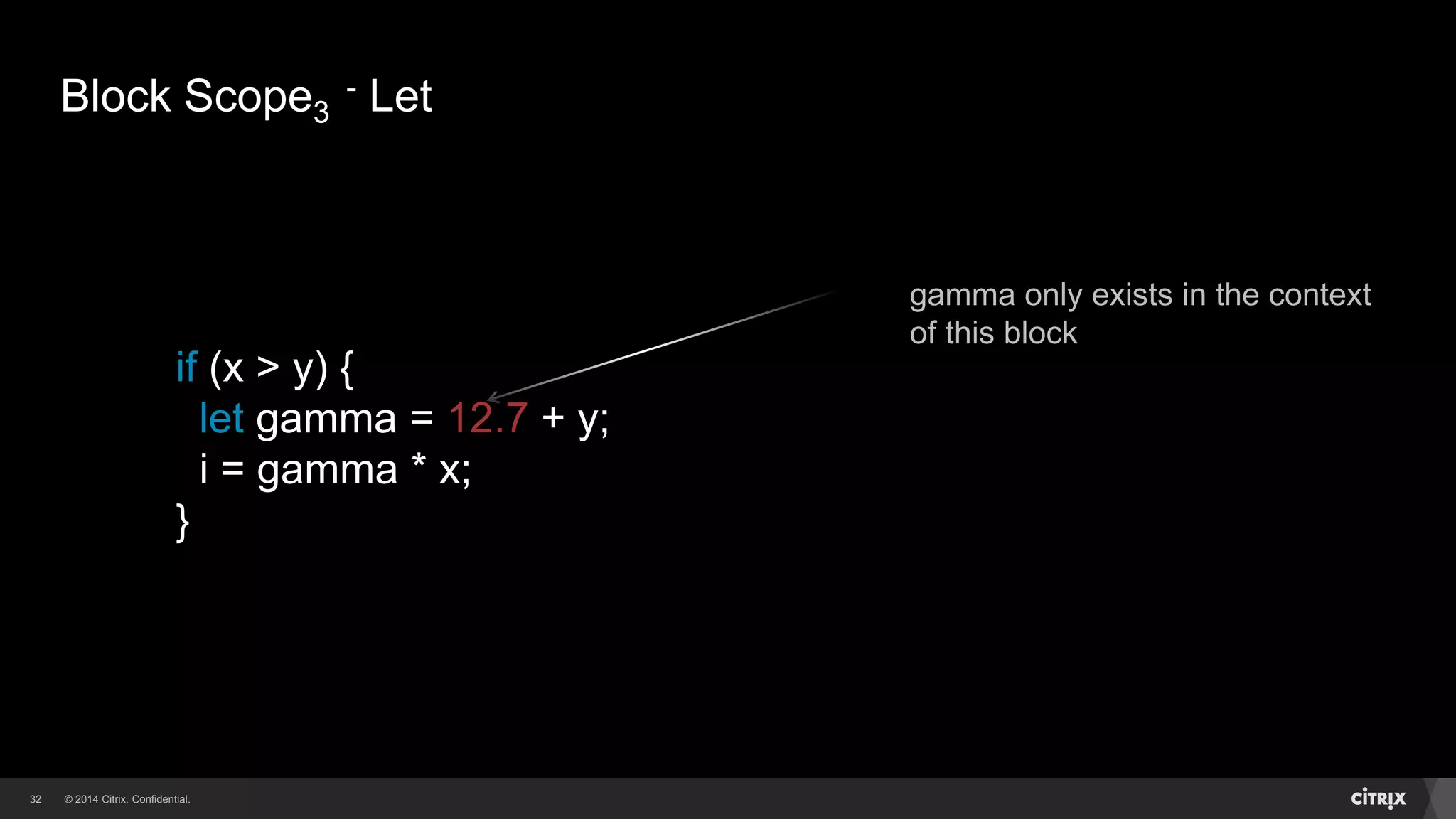

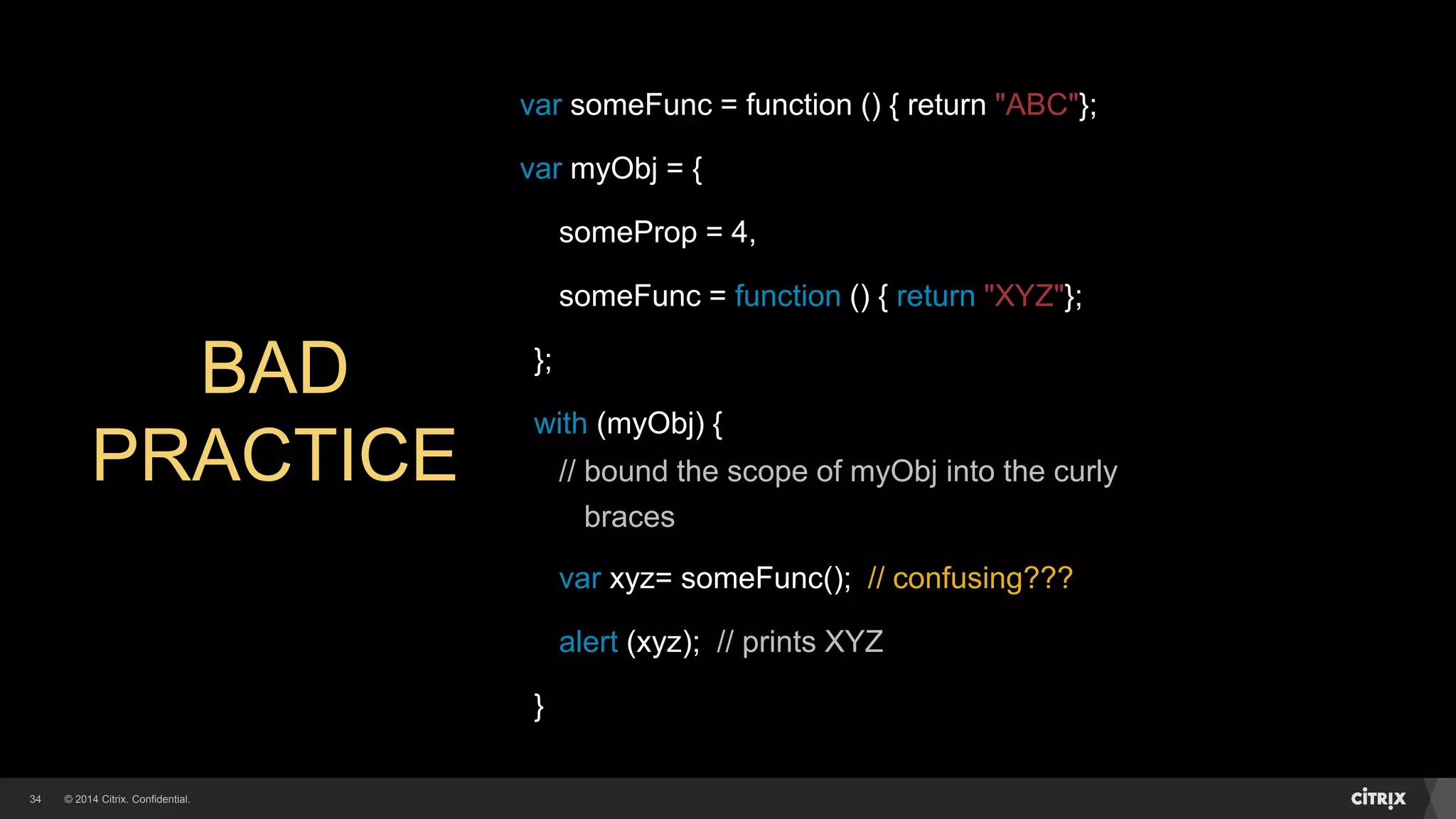
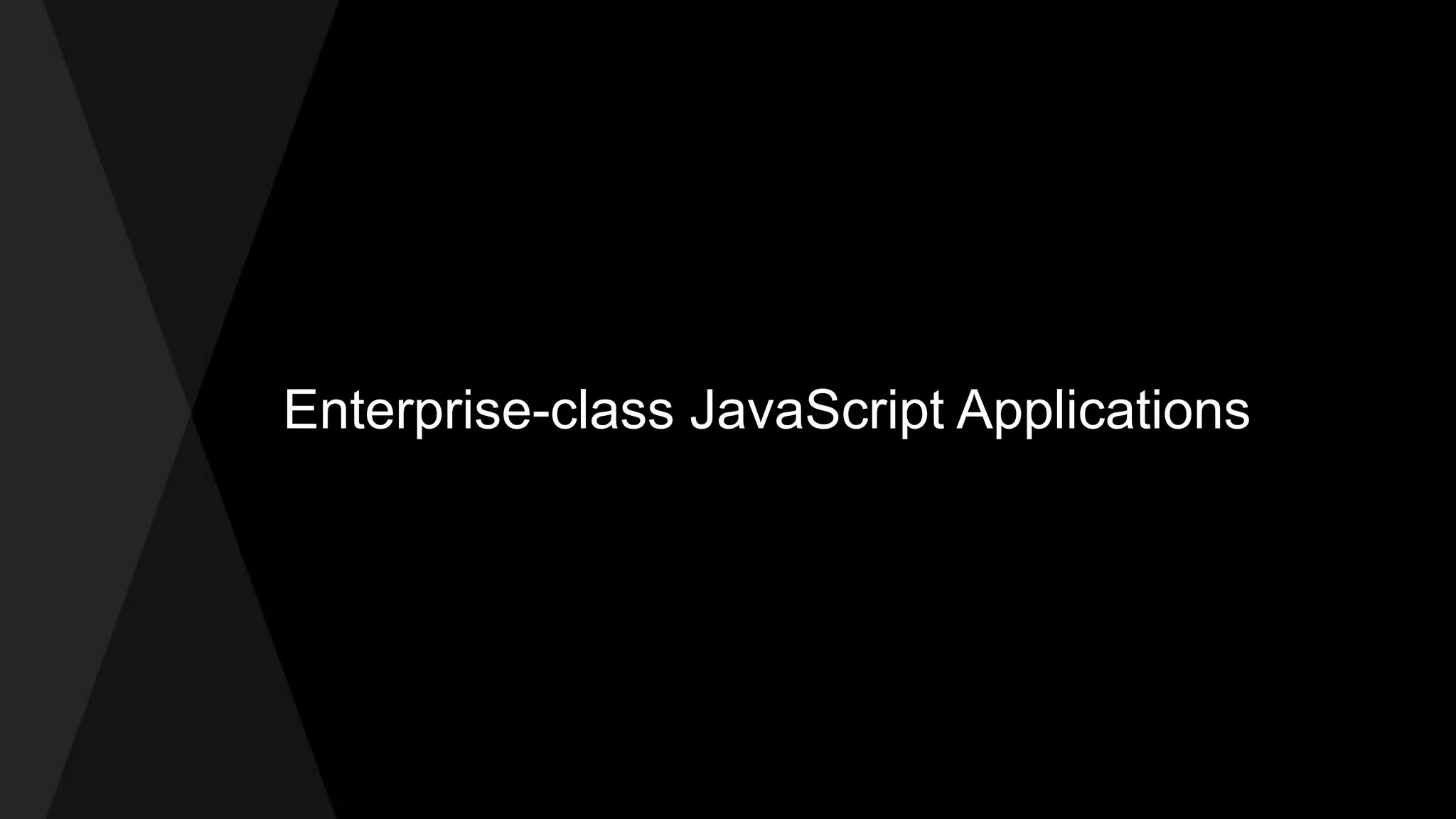
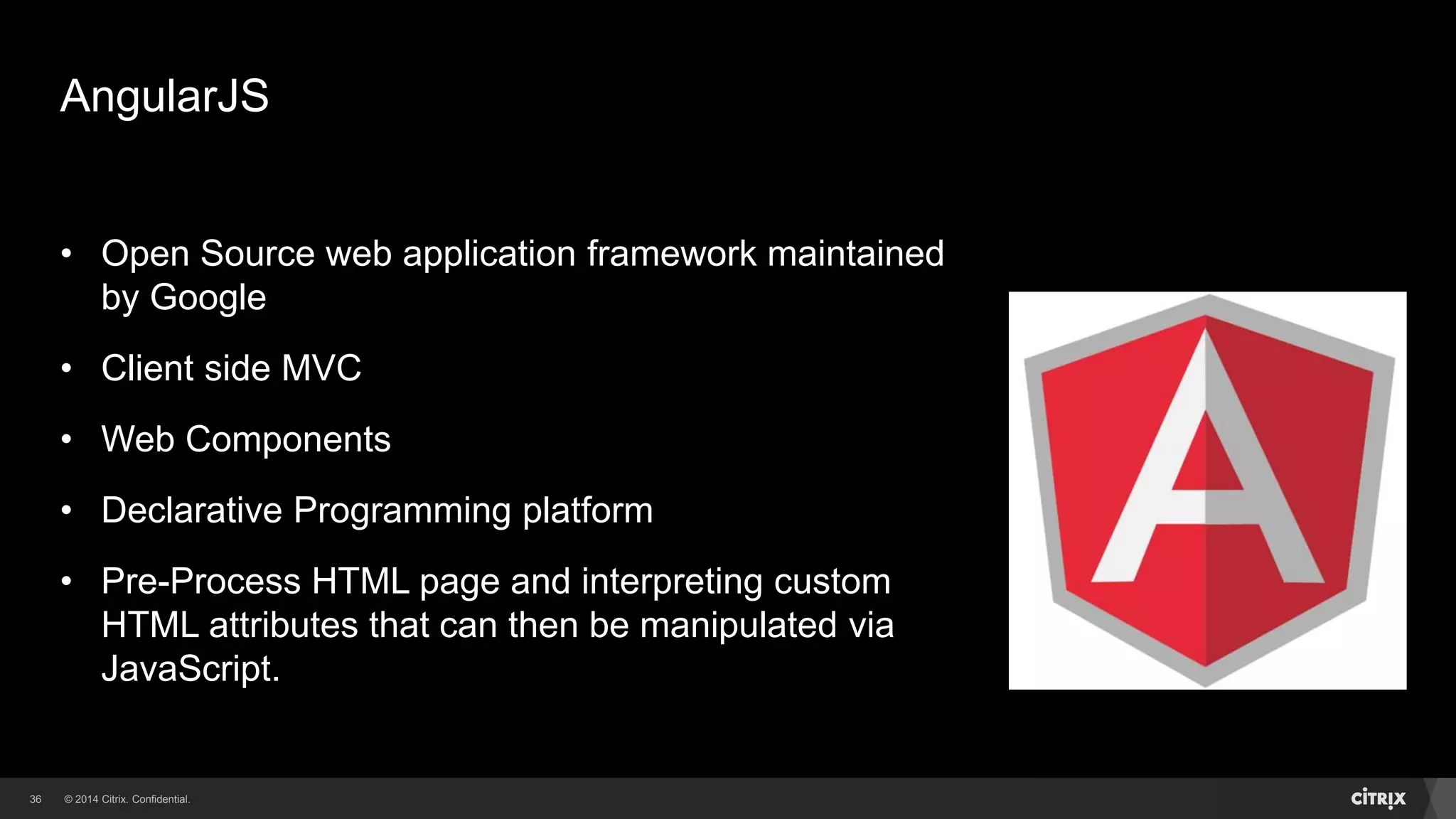
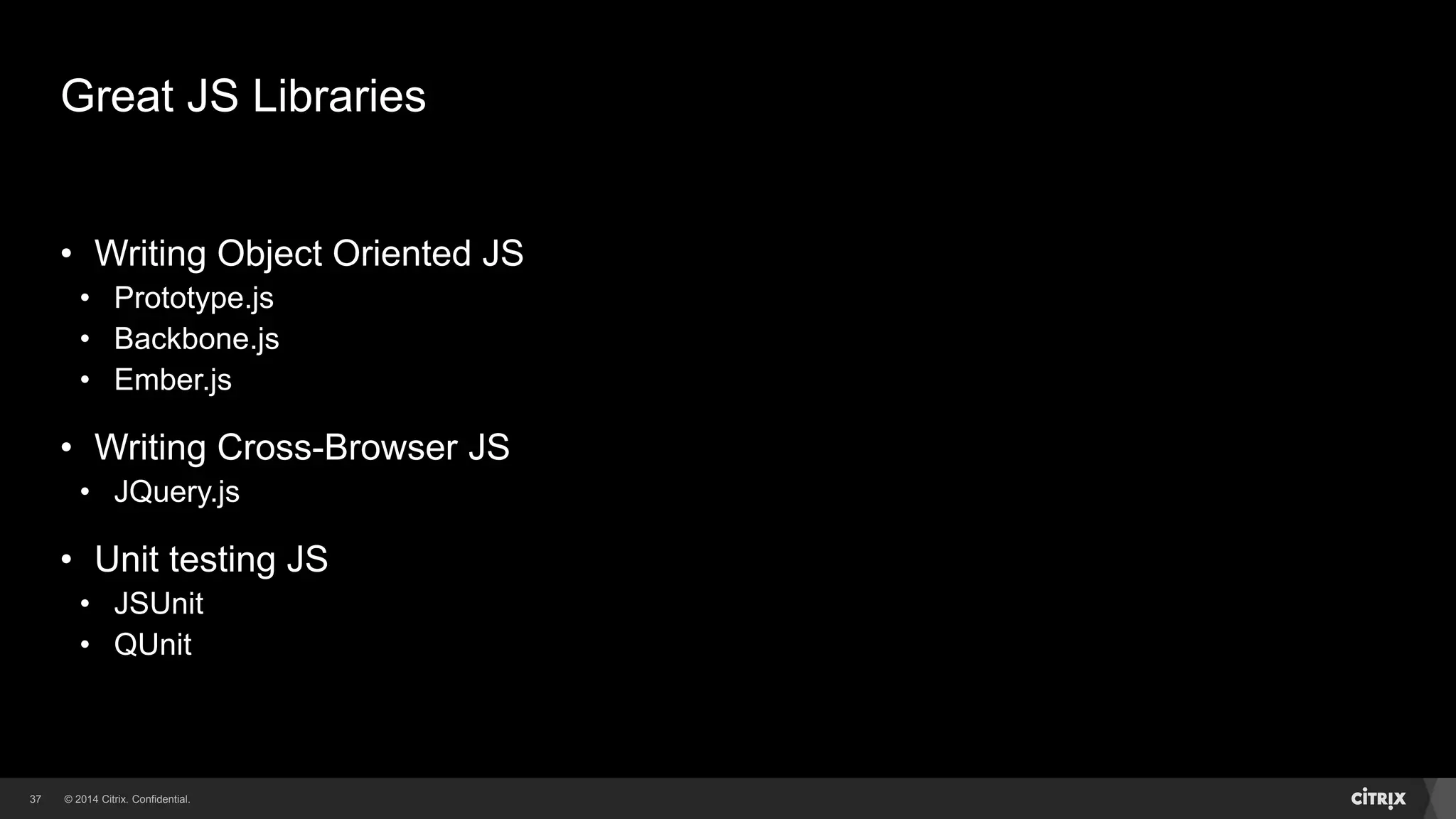

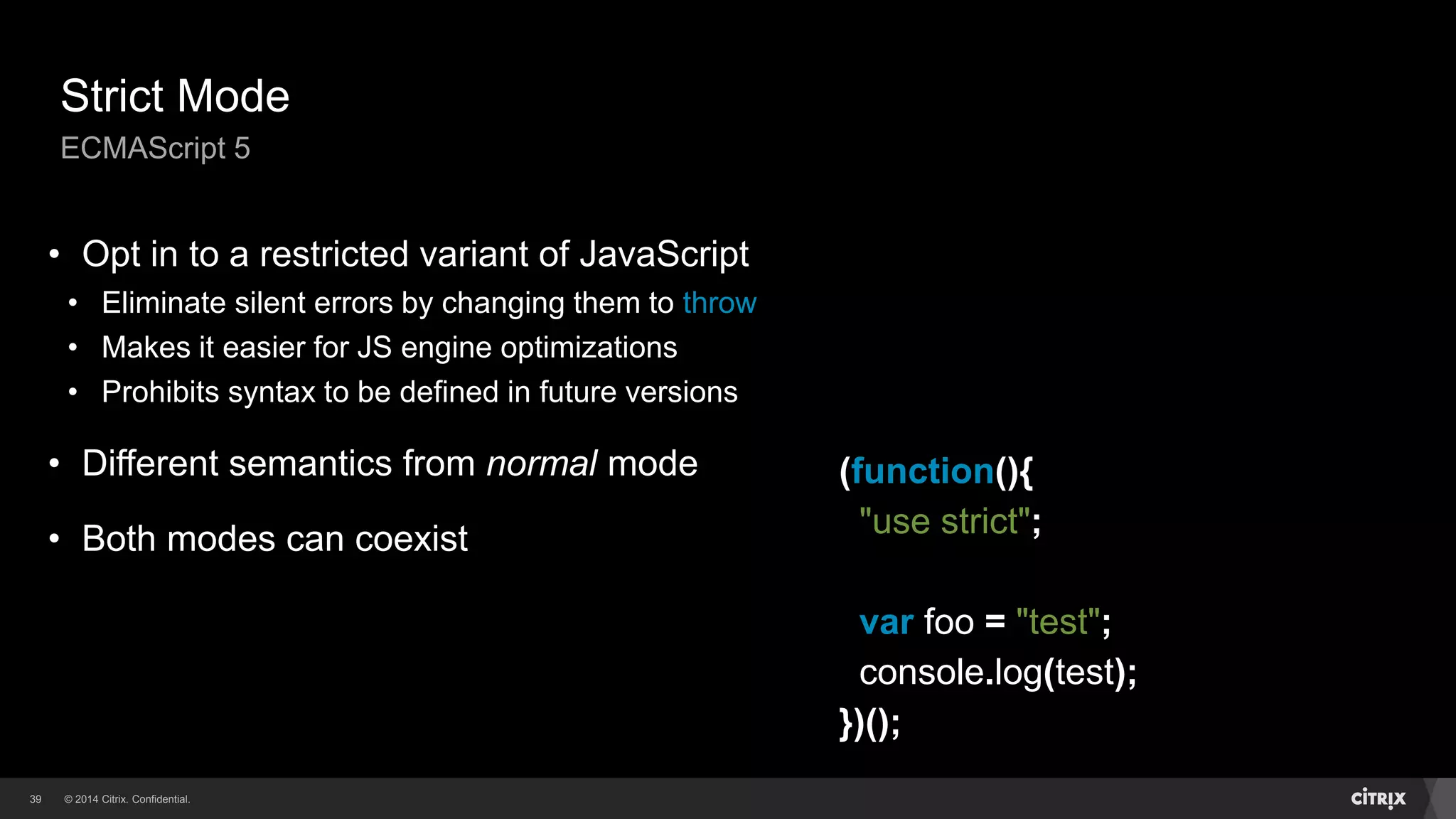
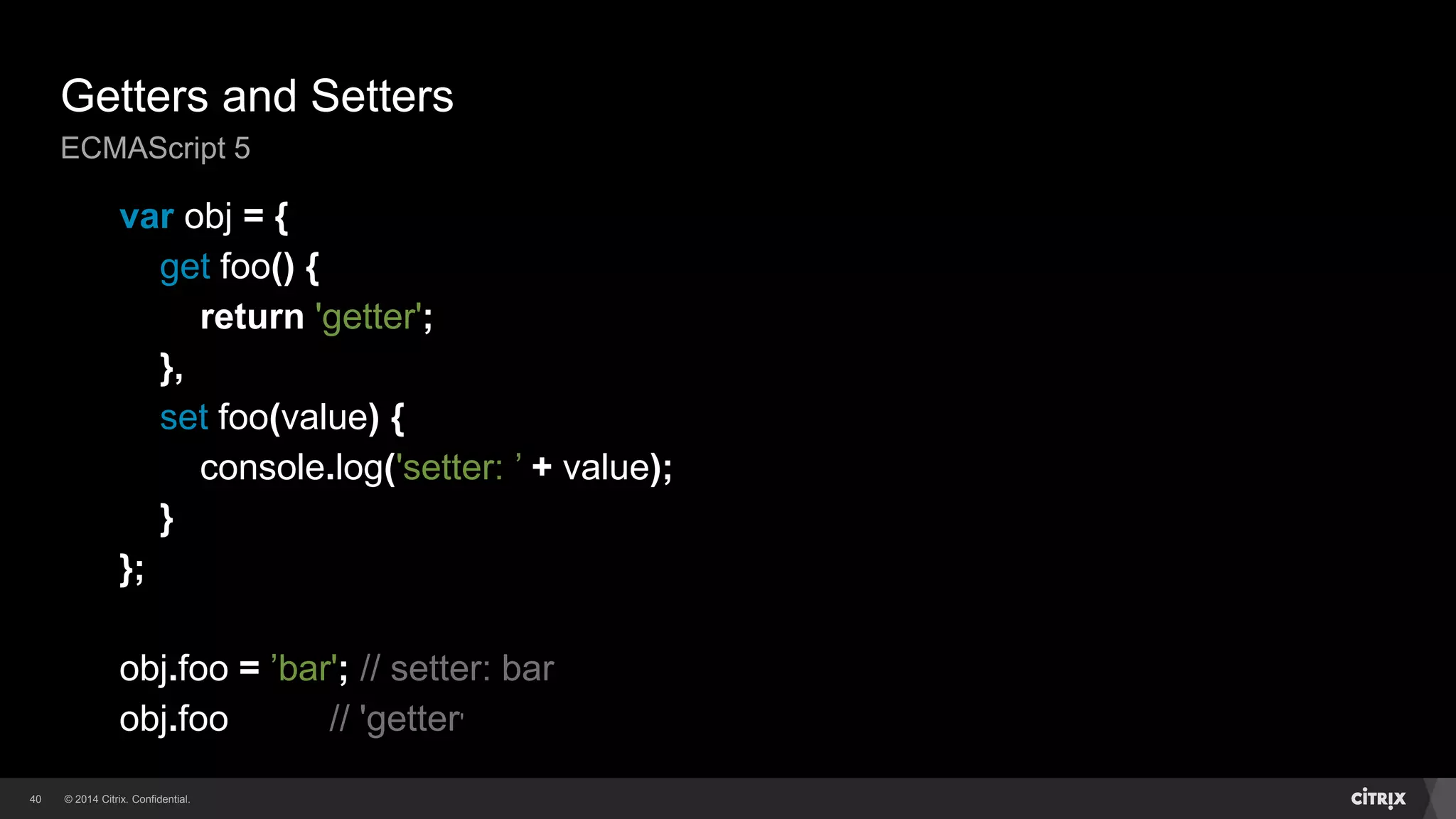
![© 2014 Citrix. Confidential.41 Arrow Functions (lambdas) Implement the … operator. Syntax: () => { }; Java 8 recently introduced this let x = [0,1,2]; x.map(x => console.log(x * x)); ECMAScript 6](https://image.slidesharecdn.com/javascript1-150217163539-conversion-gate02/75/Java-script-Techniques-Part-I-41-2048.jpg)
![© 2014 Citrix. Confidential.42 Variadic Functions Implement the … operator. Syntax: function* name( [param[, param[, ... param]]]) { statements } ECMAScript 6](https://image.slidesharecdn.com/javascript1-150217163539-conversion-gate02/75/Java-script-Techniques-Part-I-42-2048.jpg)
![© 2014 Citrix. Confidential.43 Array Comprehension Very popular in Python and Perl Shorten operations on multiple items Format: [for (x of iterable) if (condition) x] // simple example var abc = [“A”, “B”, “C”]; [for (letters in abc) letters.lowerCase()] // another example (with if) var years = [1954, 1974, 1990, 2006, 2010]; [for (year of years) if (year > 2000) year]; ECMAScript 7](https://image.slidesharecdn.com/javascript1-150217163539-conversion-gate02/75/Java-script-Techniques-Part-I-43-2048.jpg)
